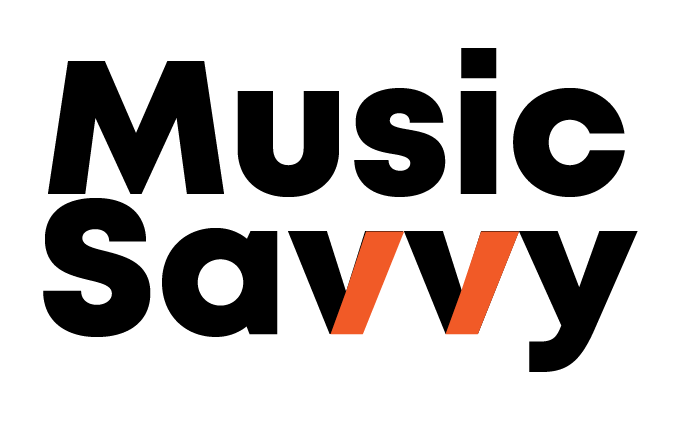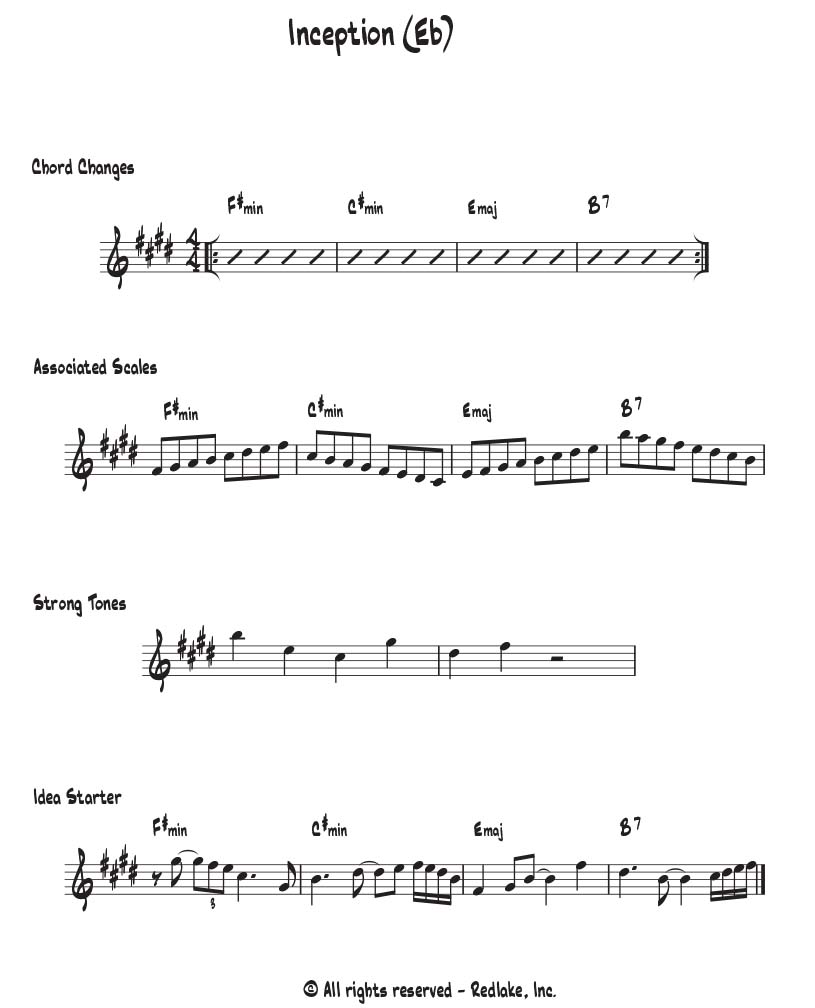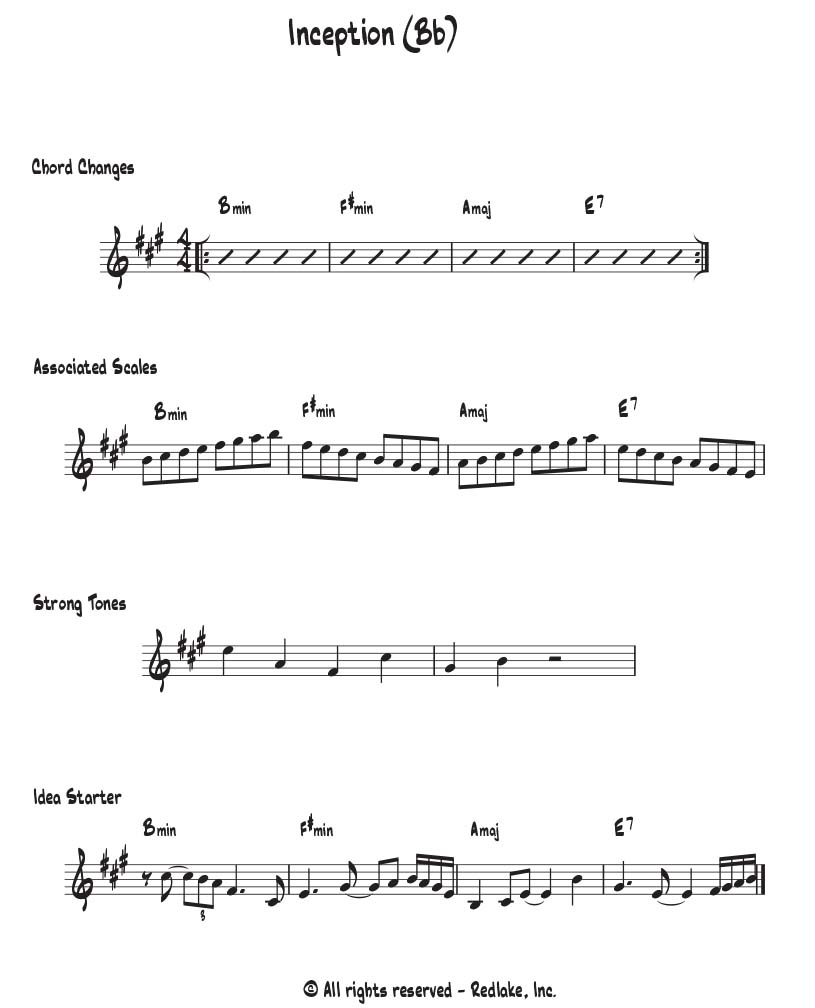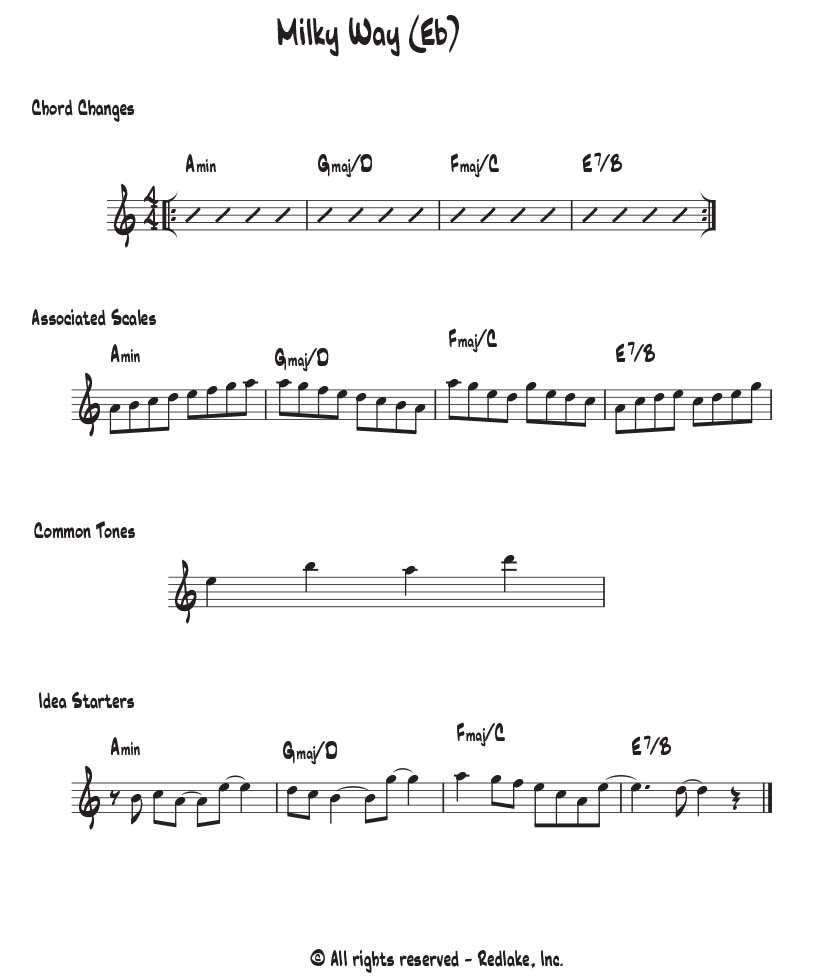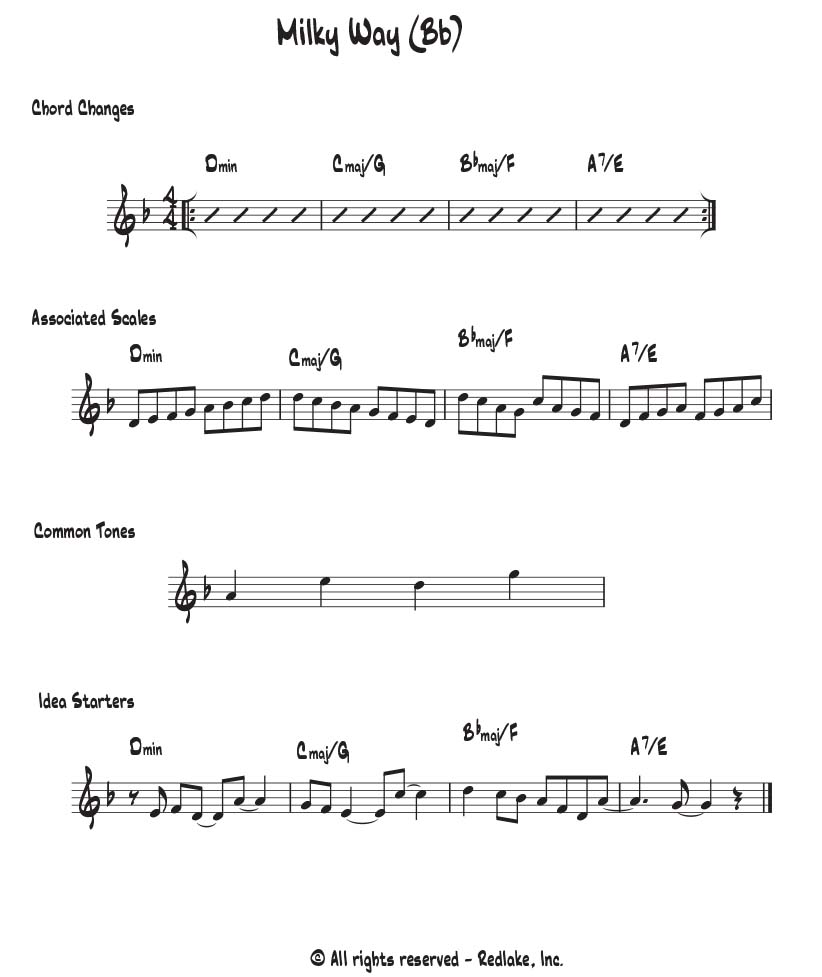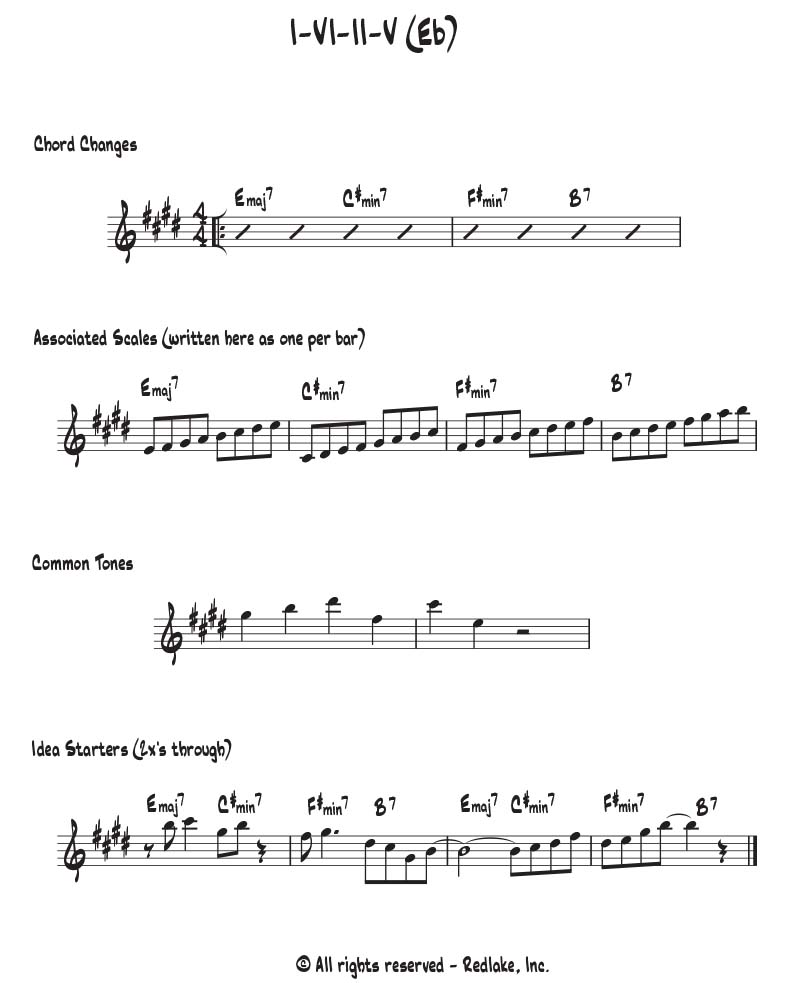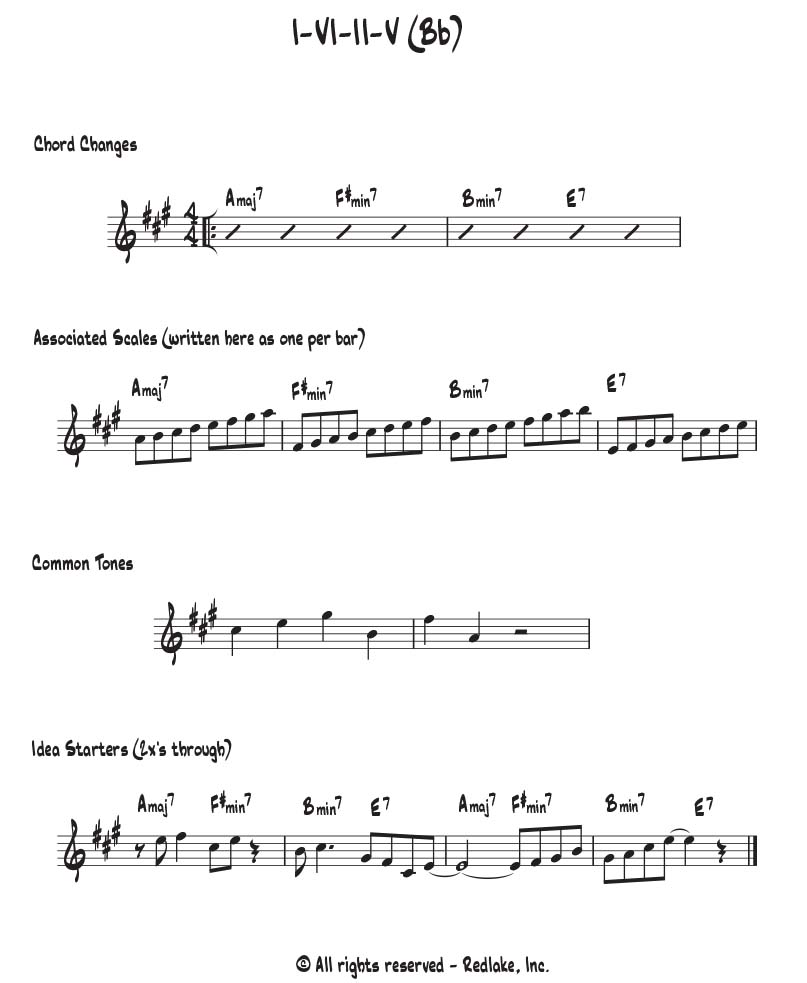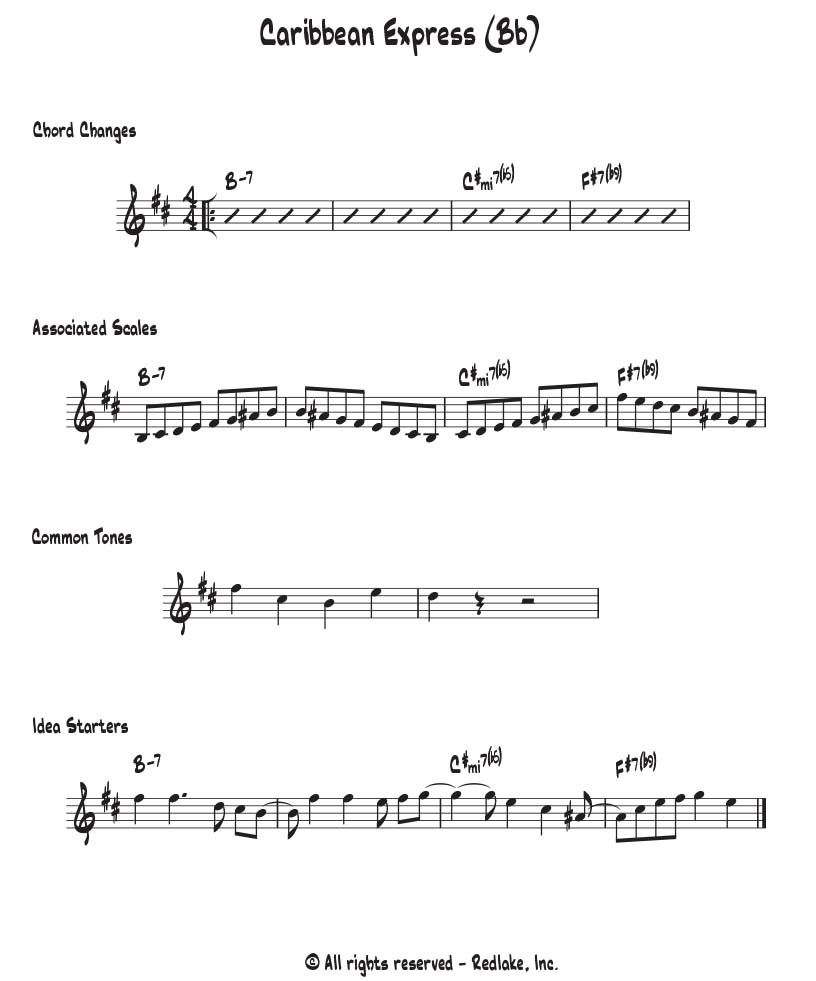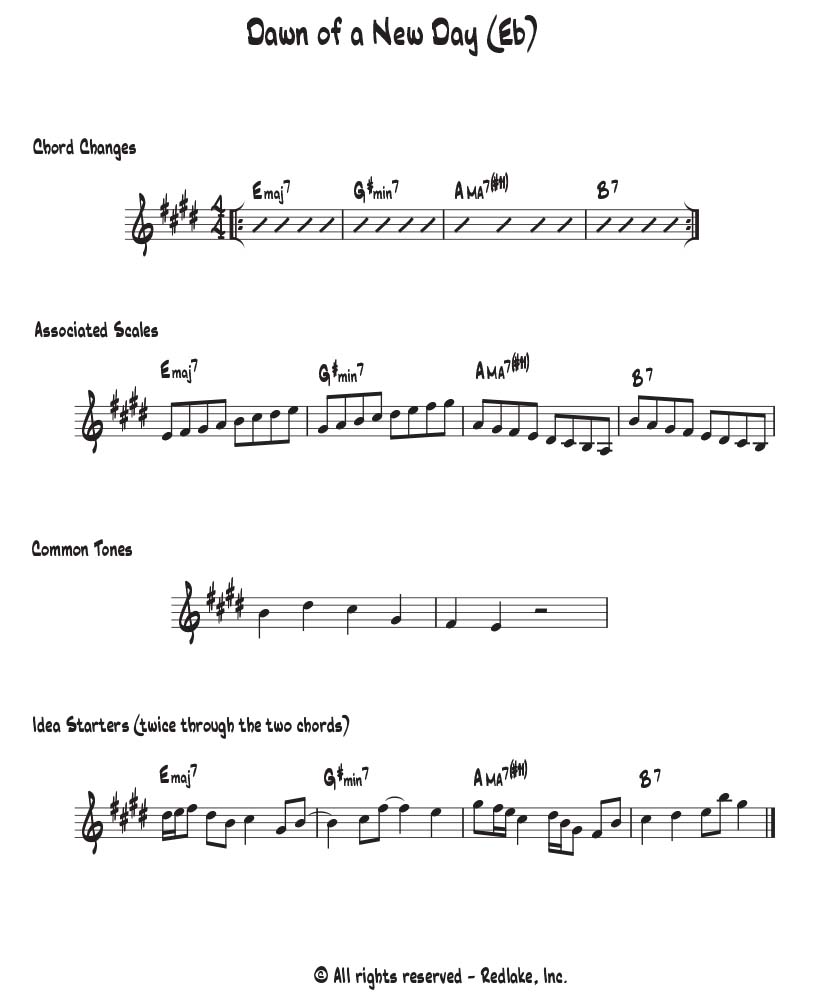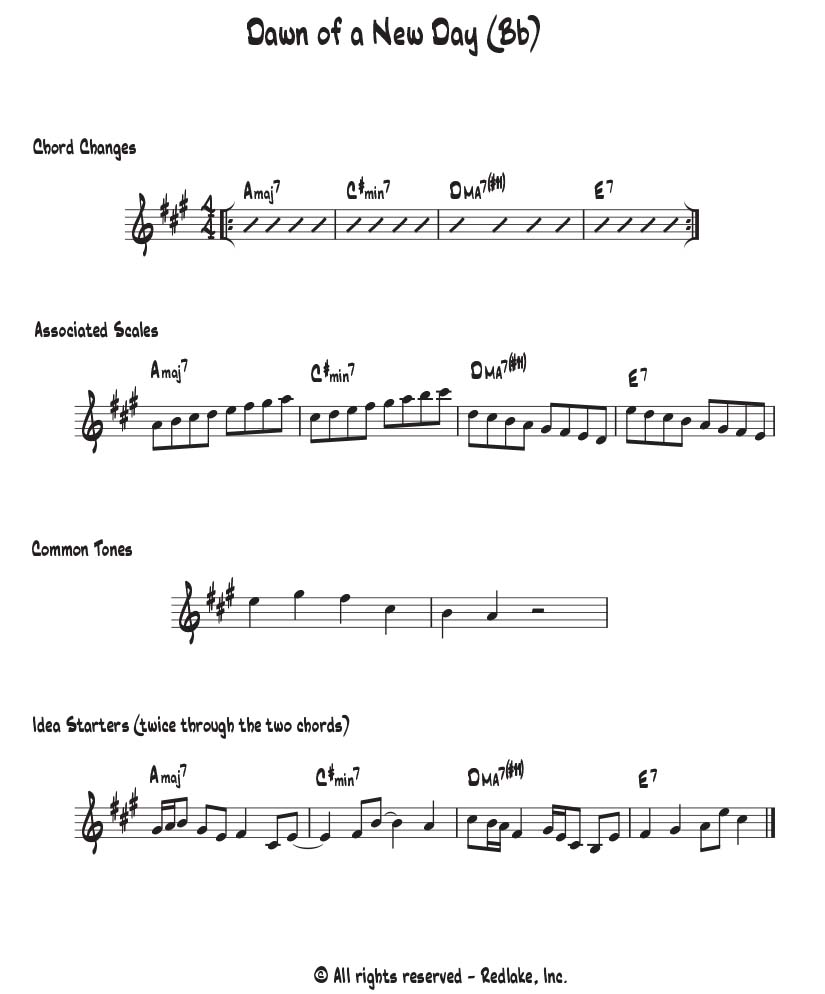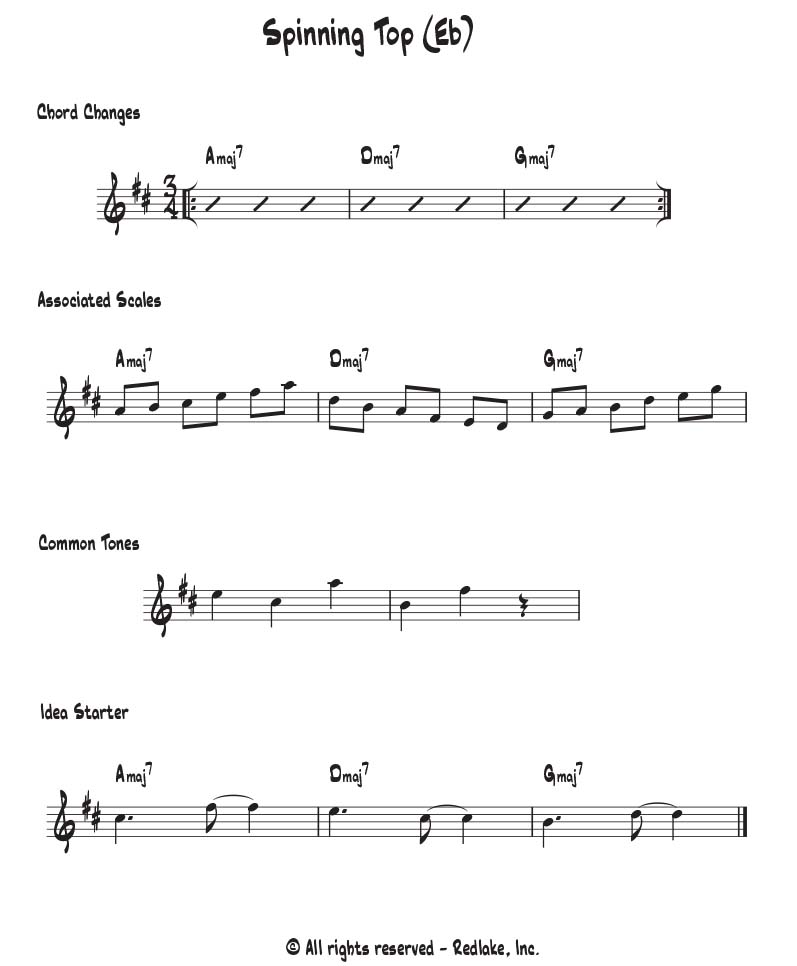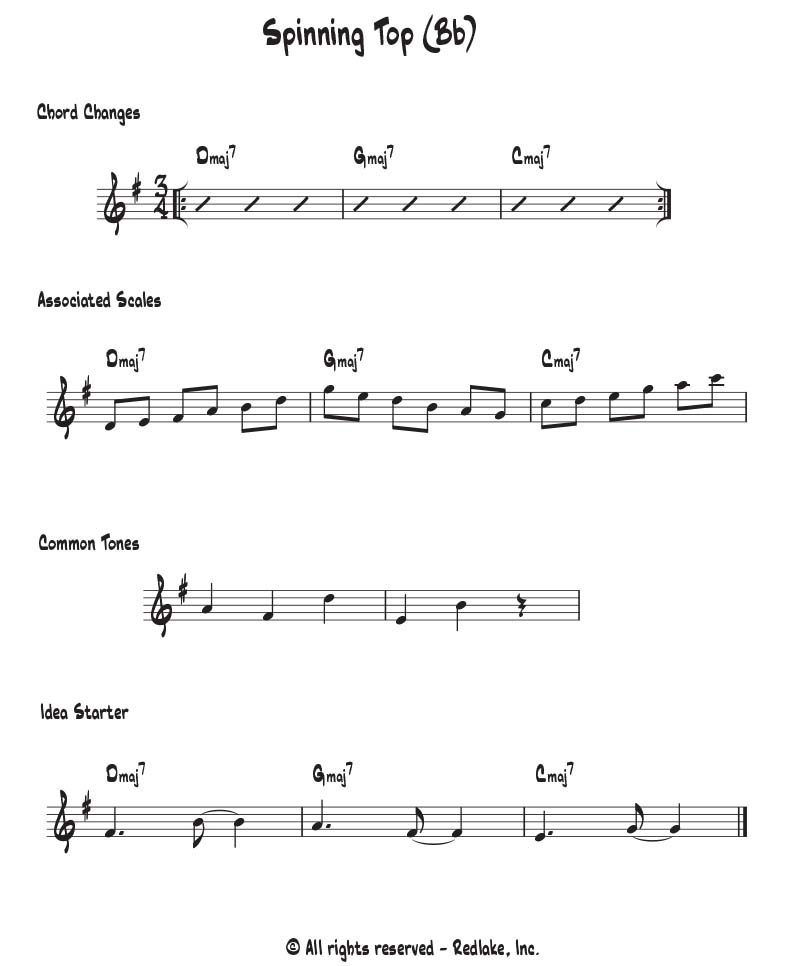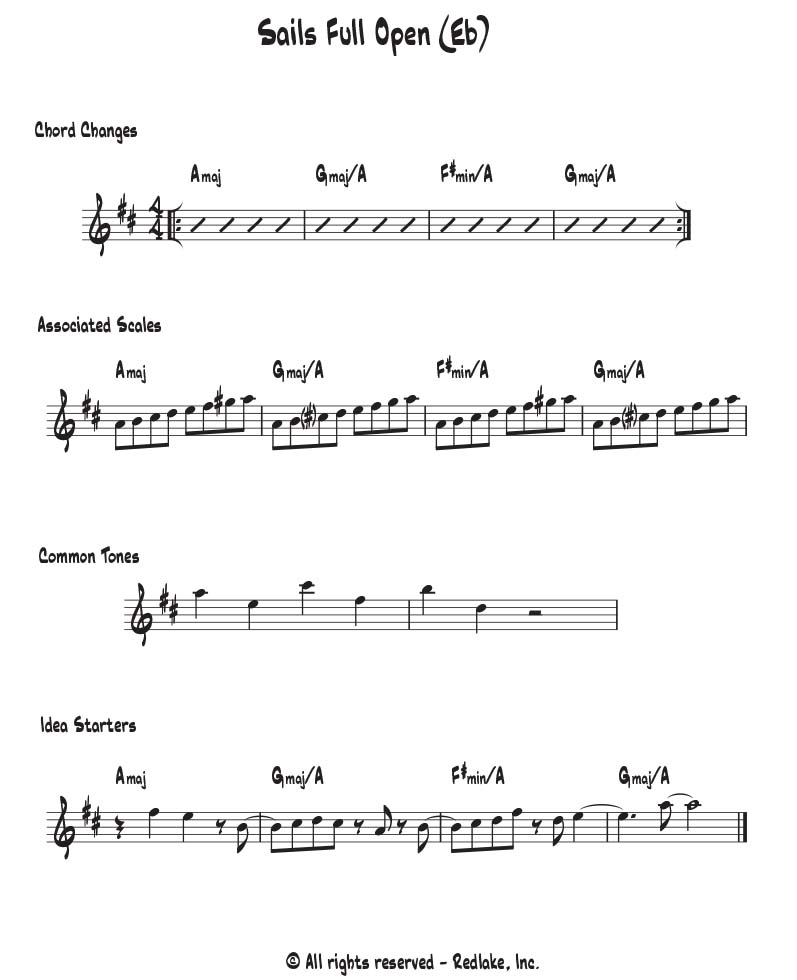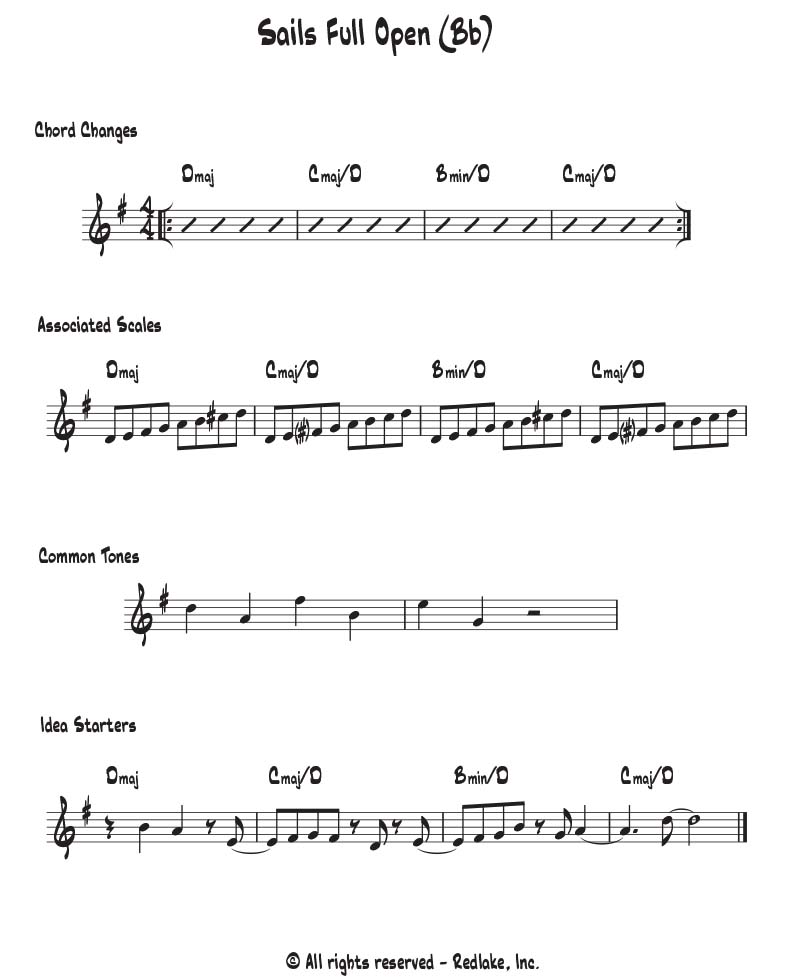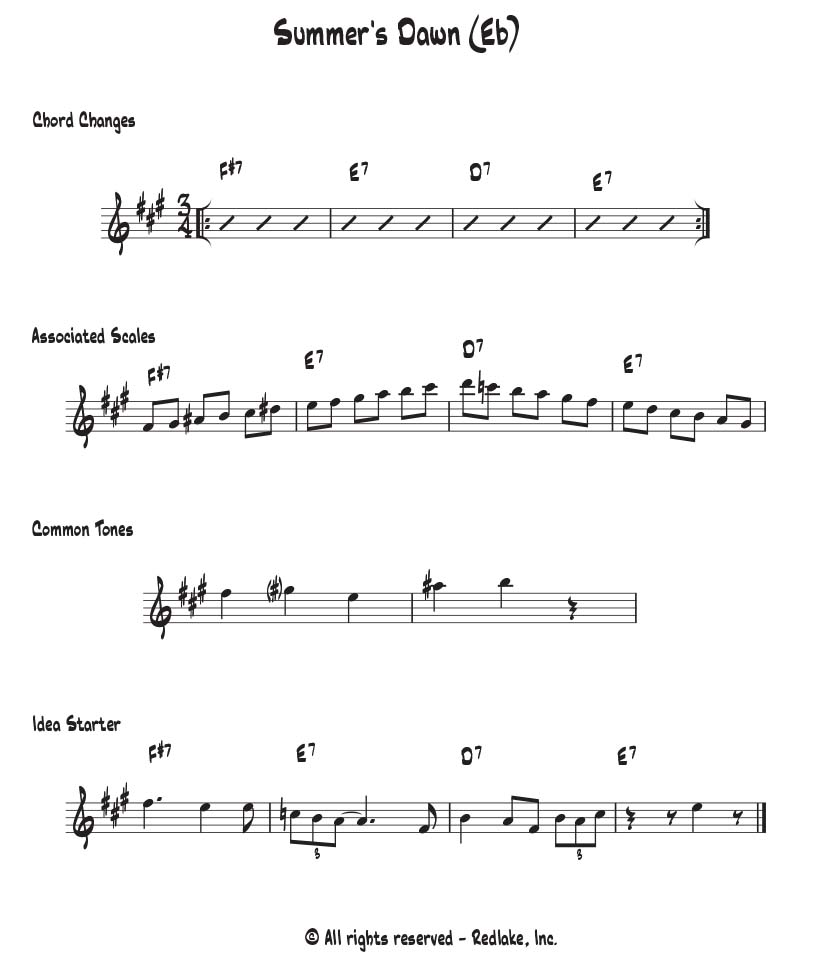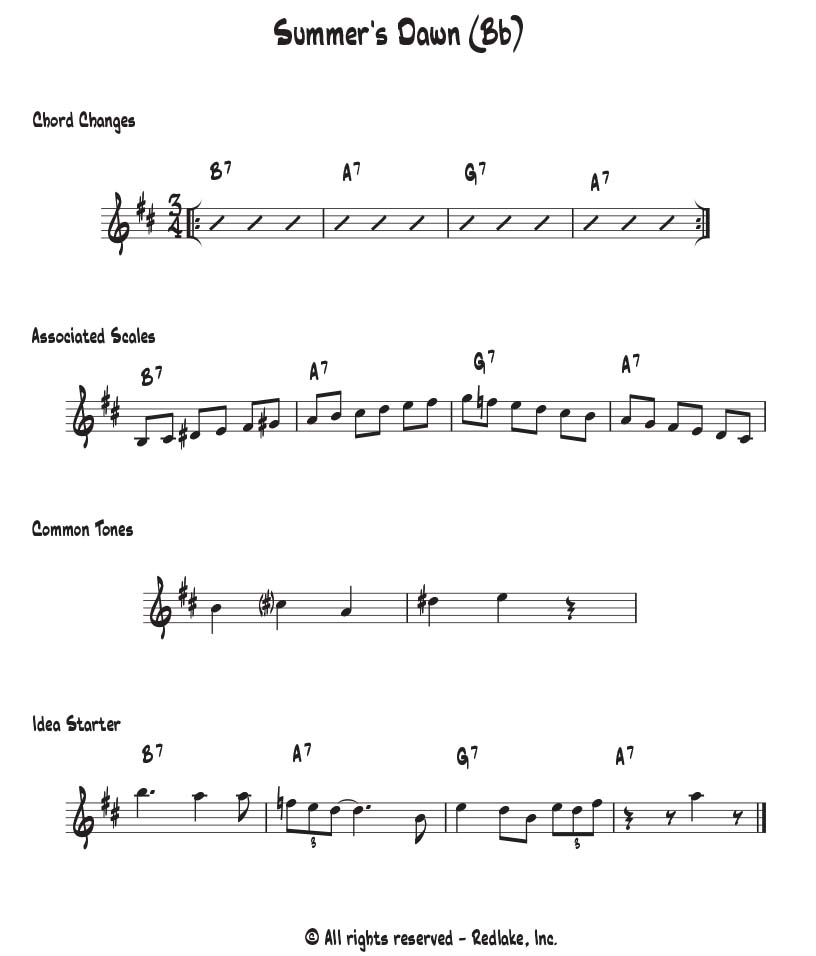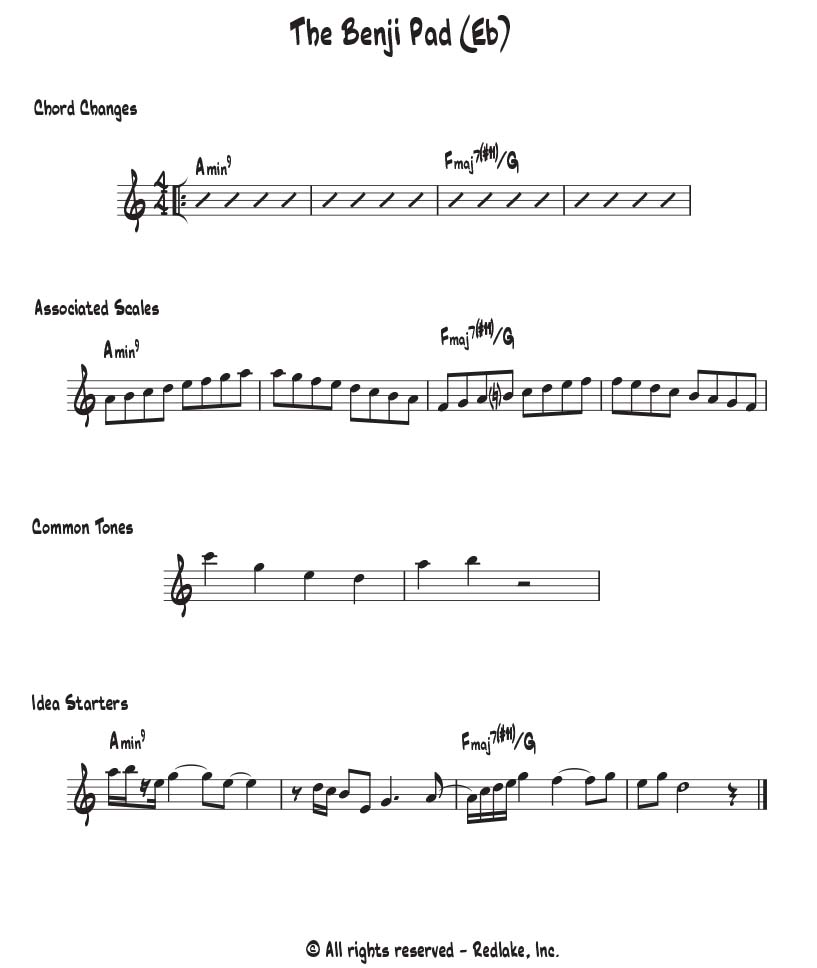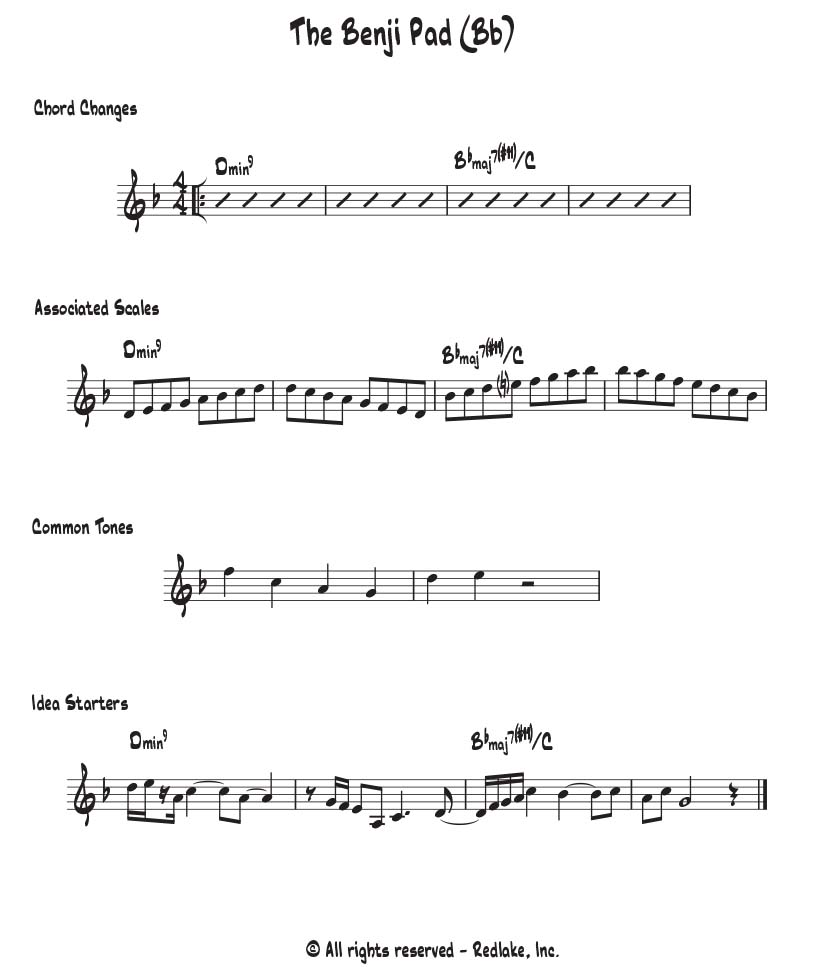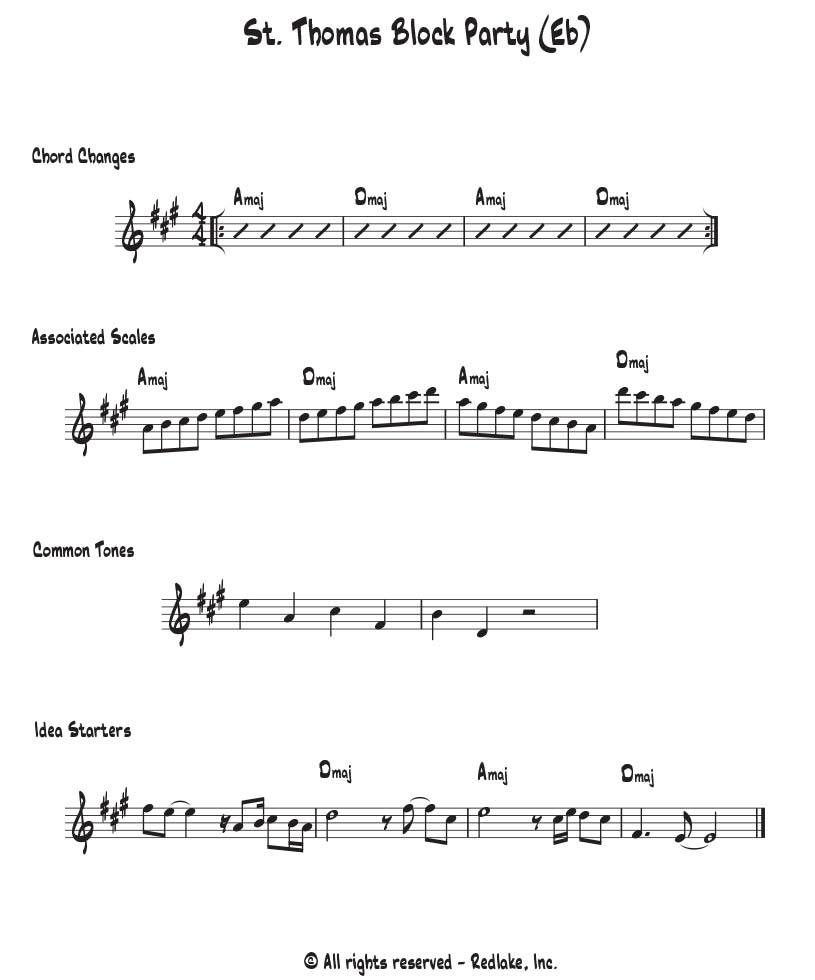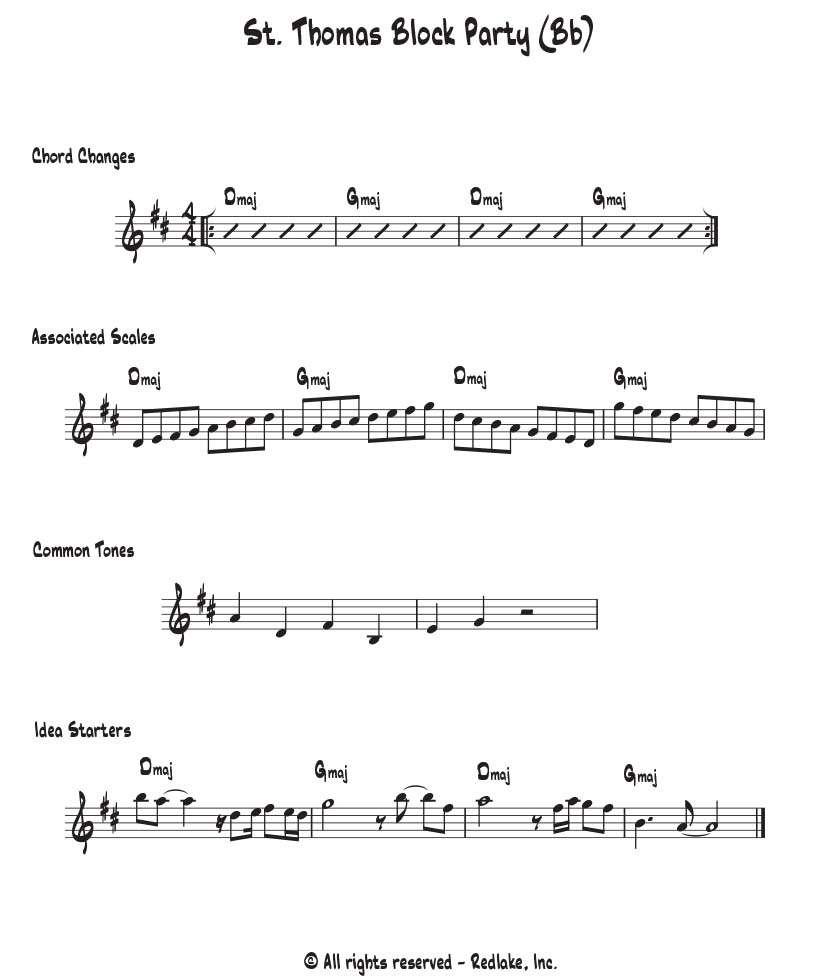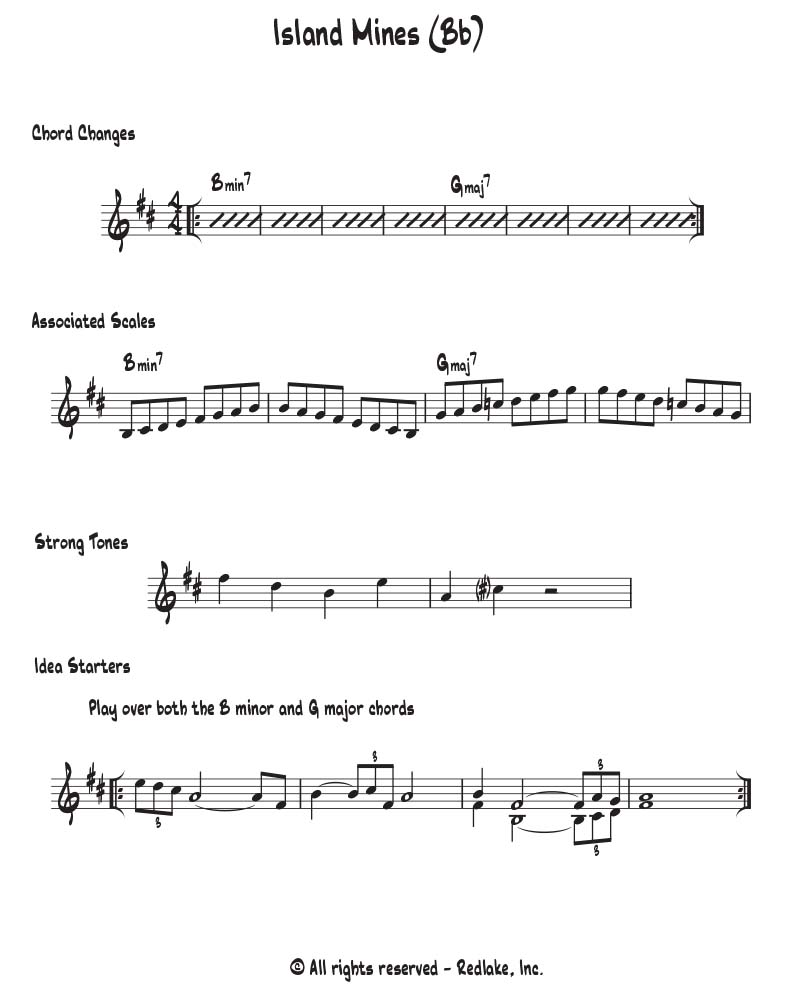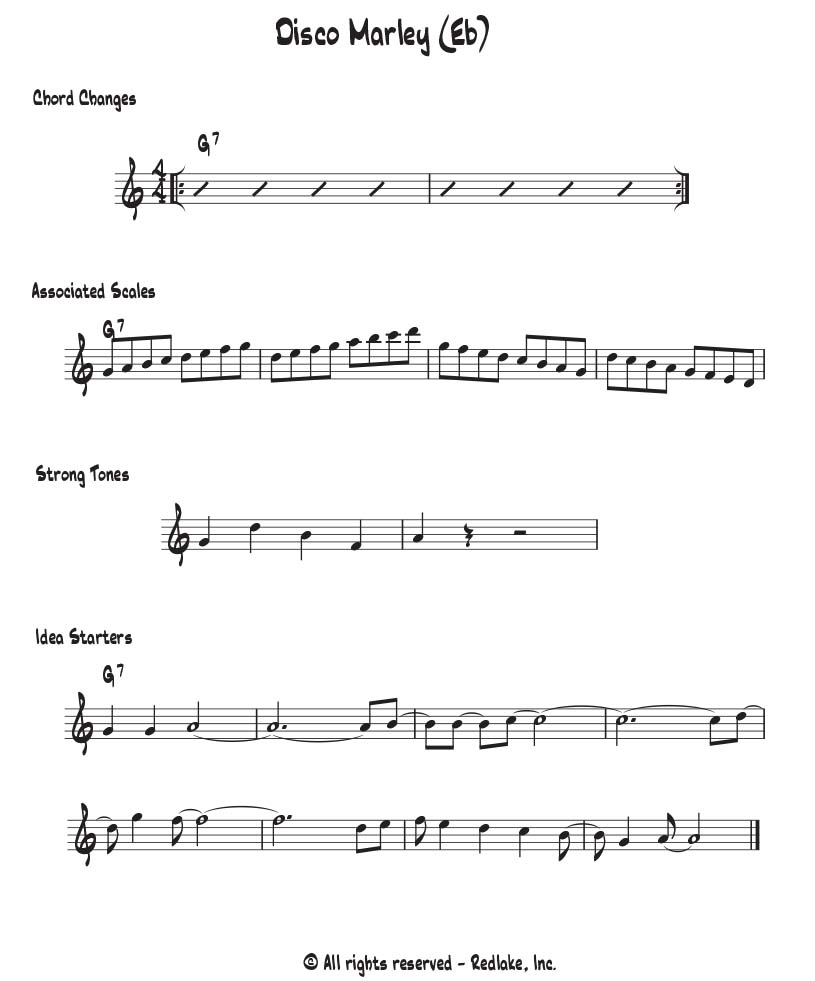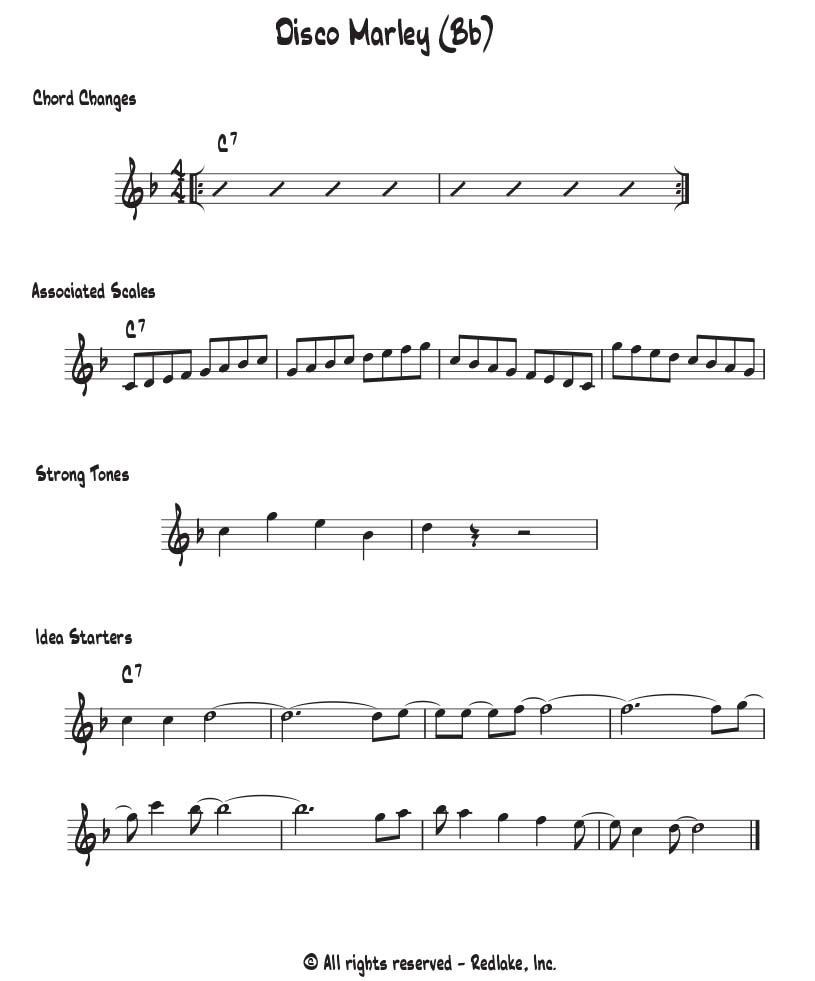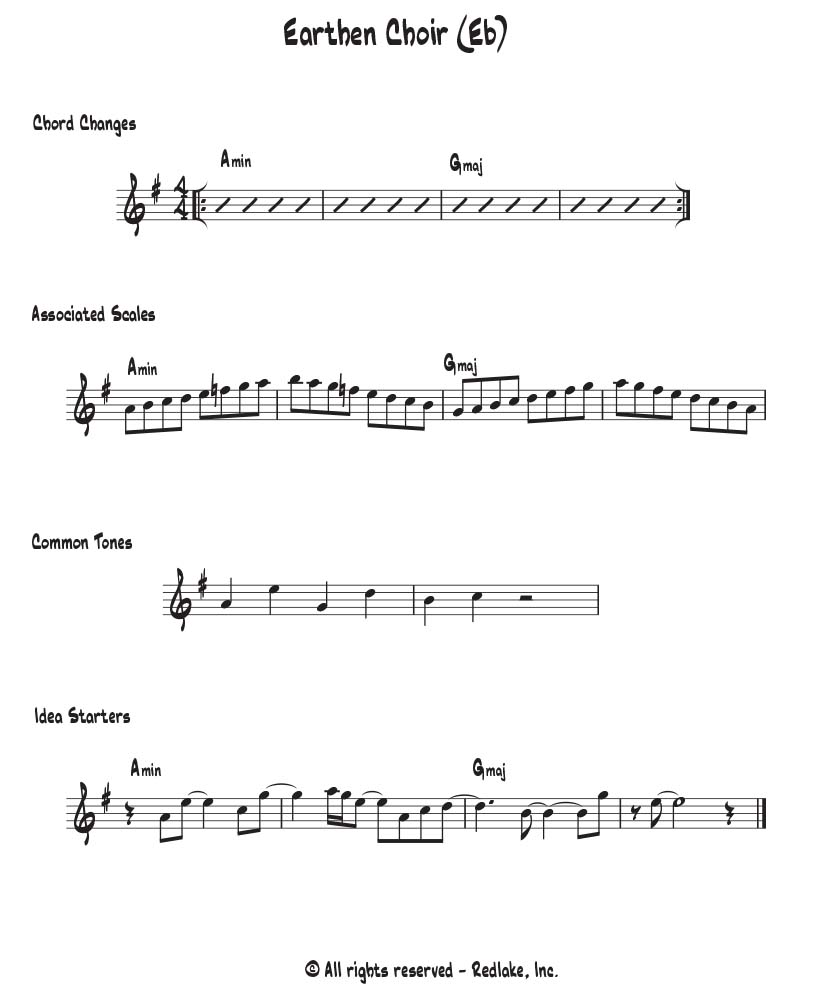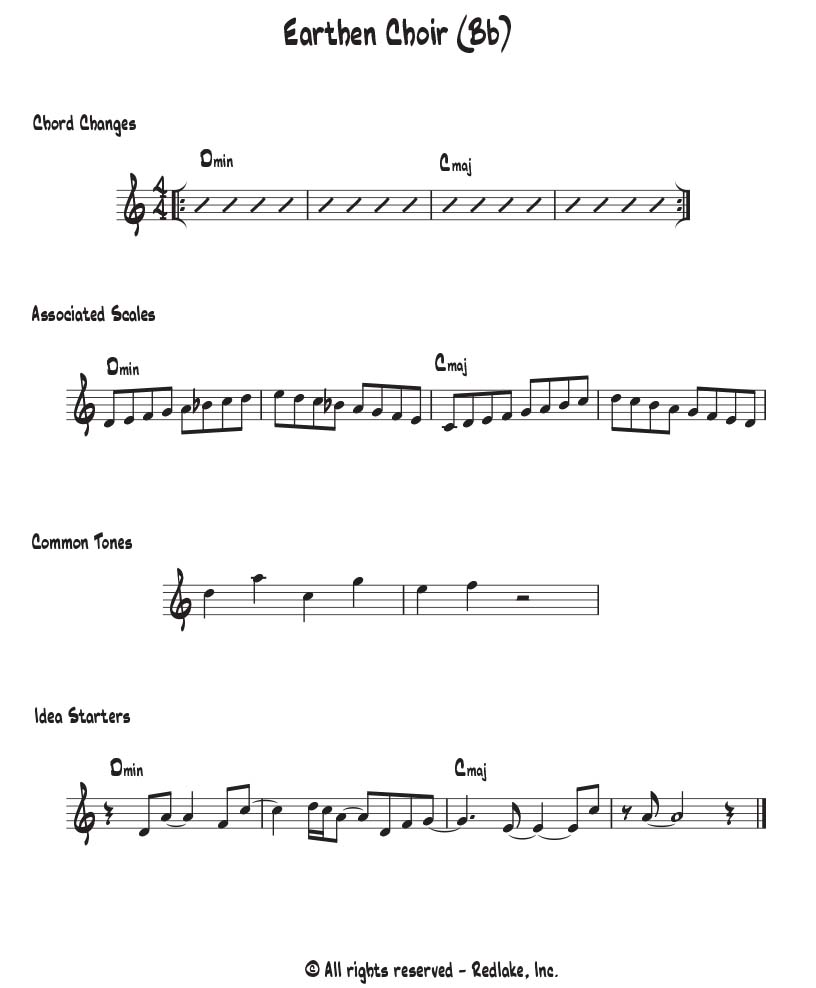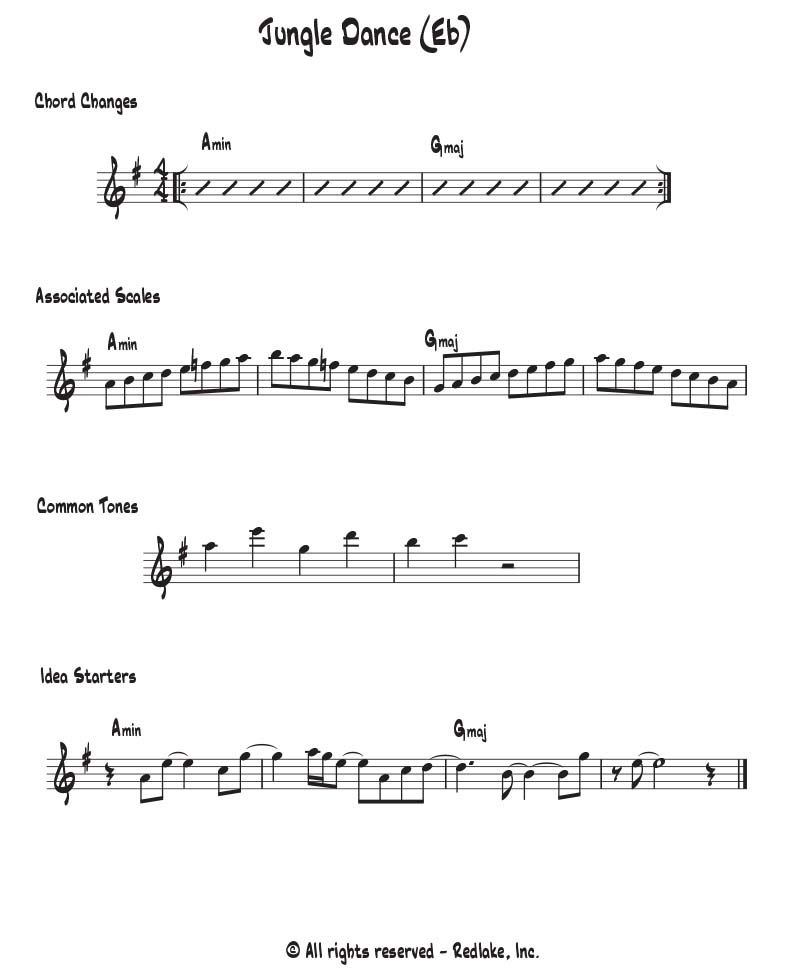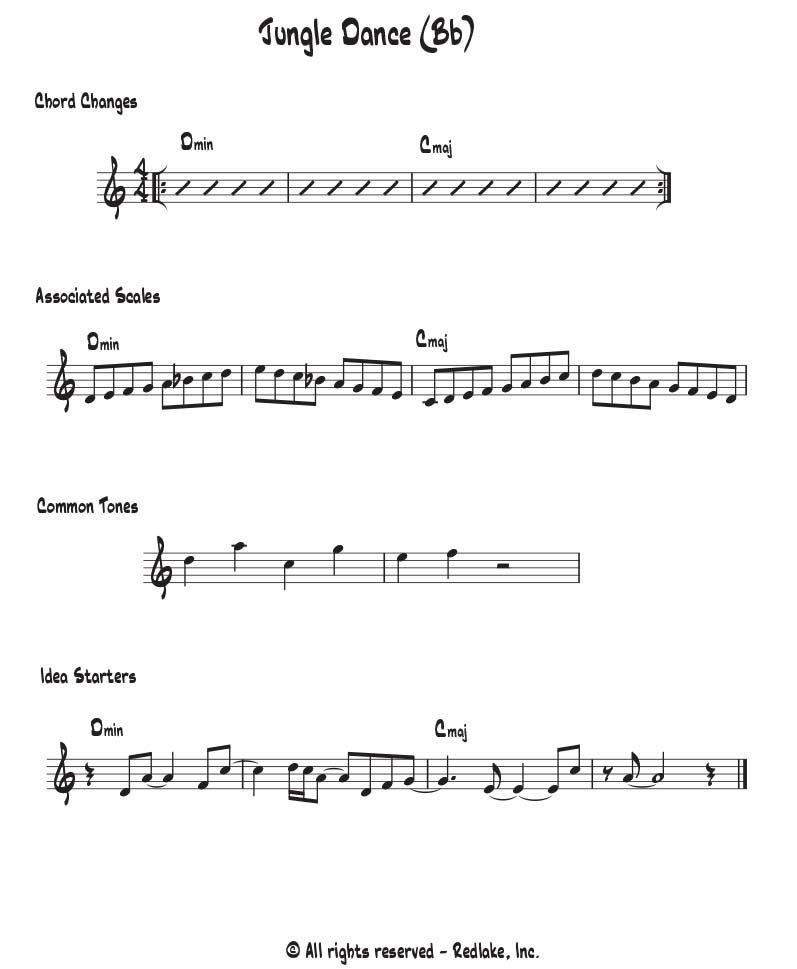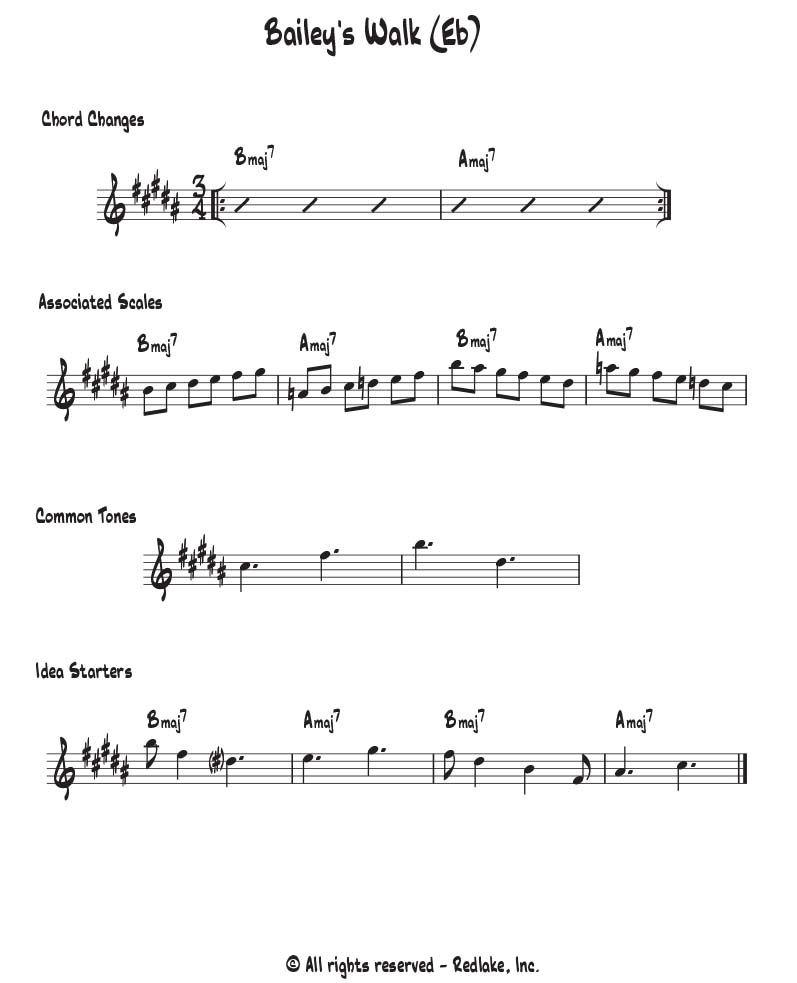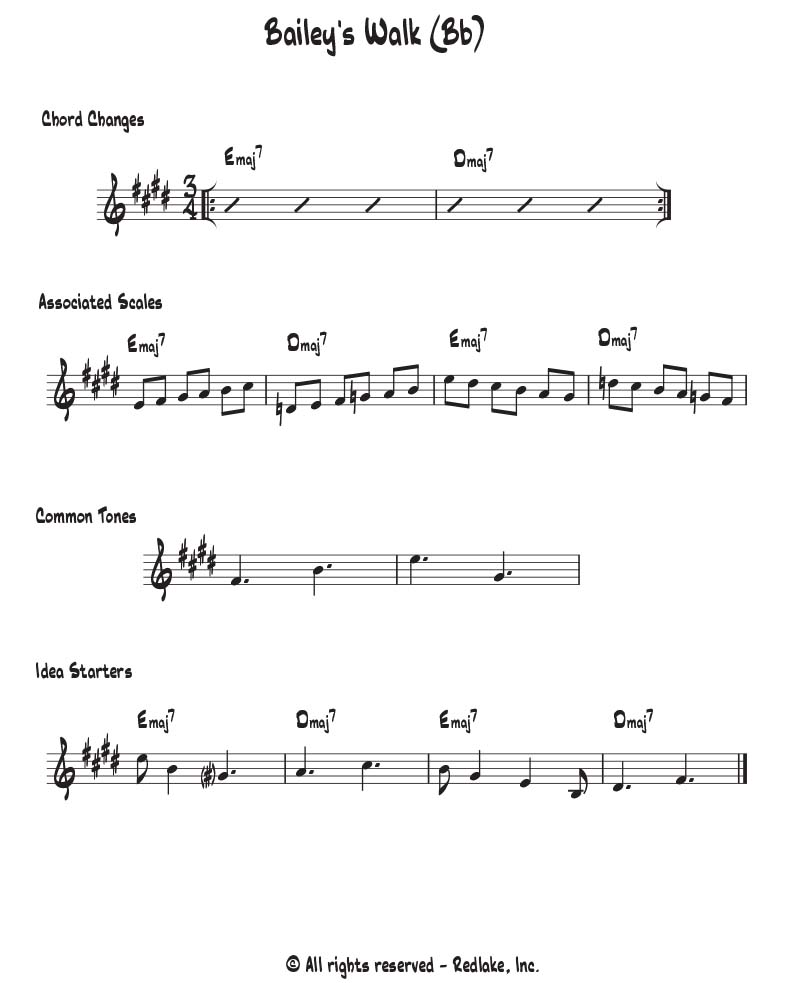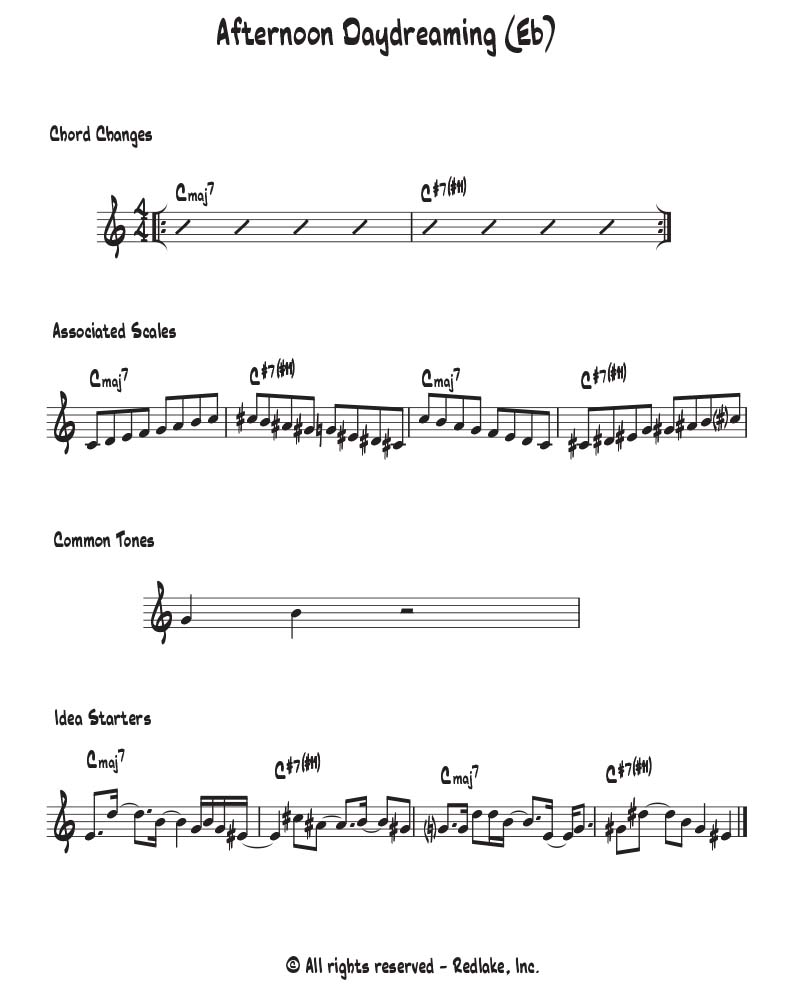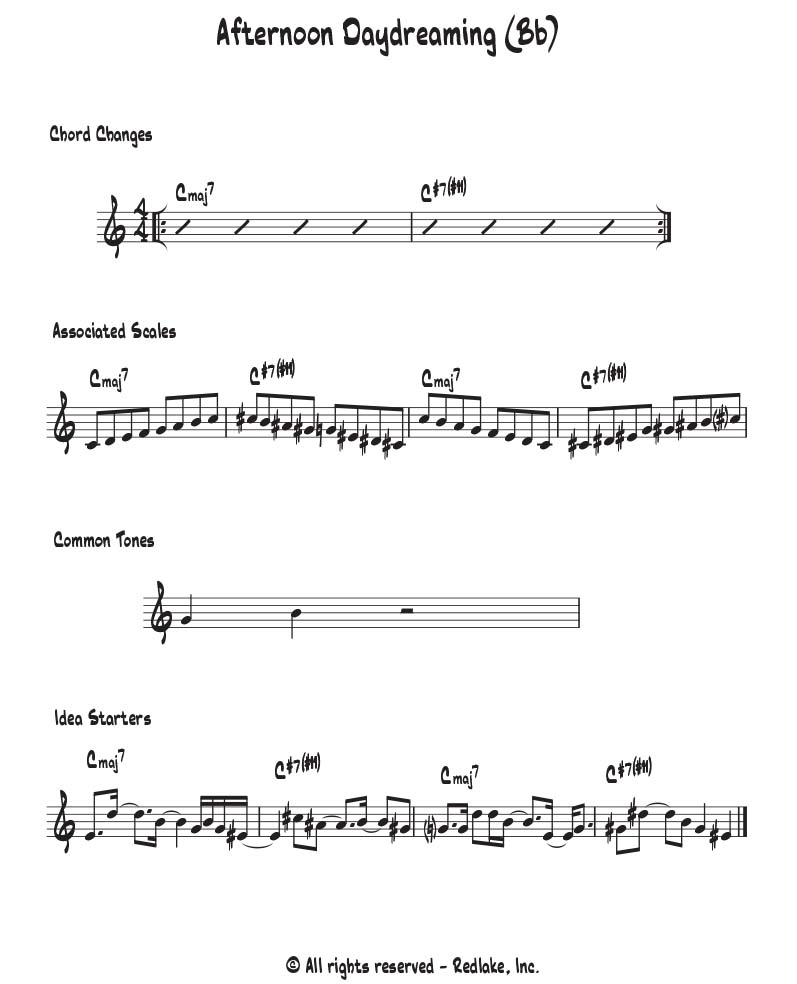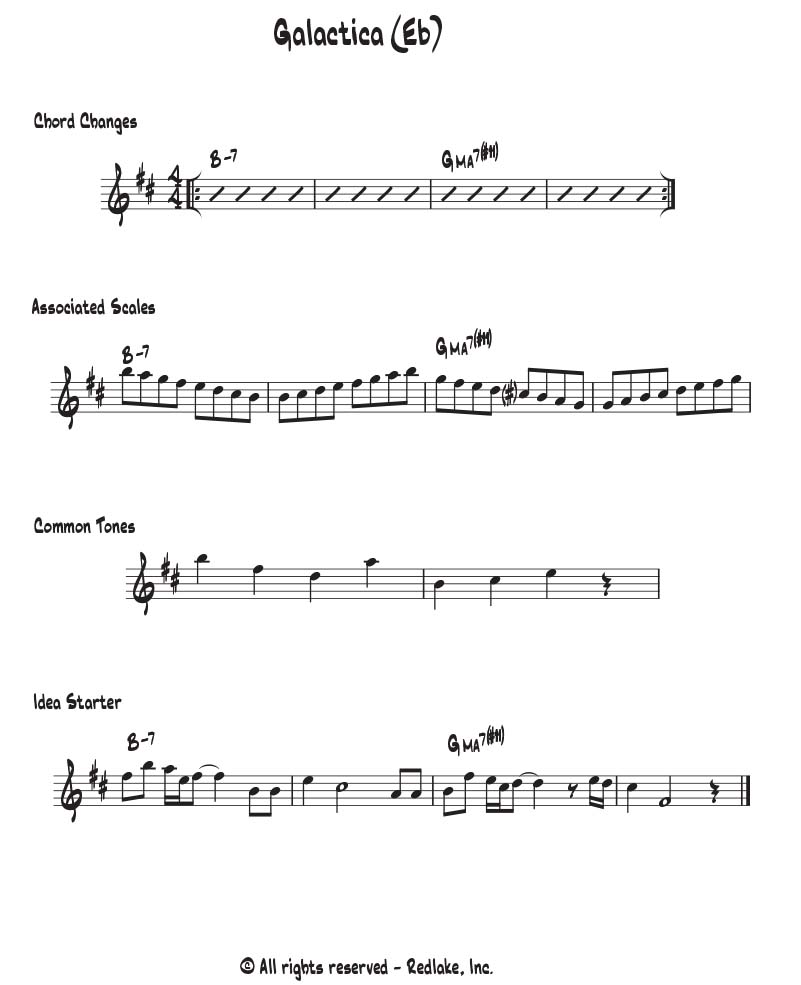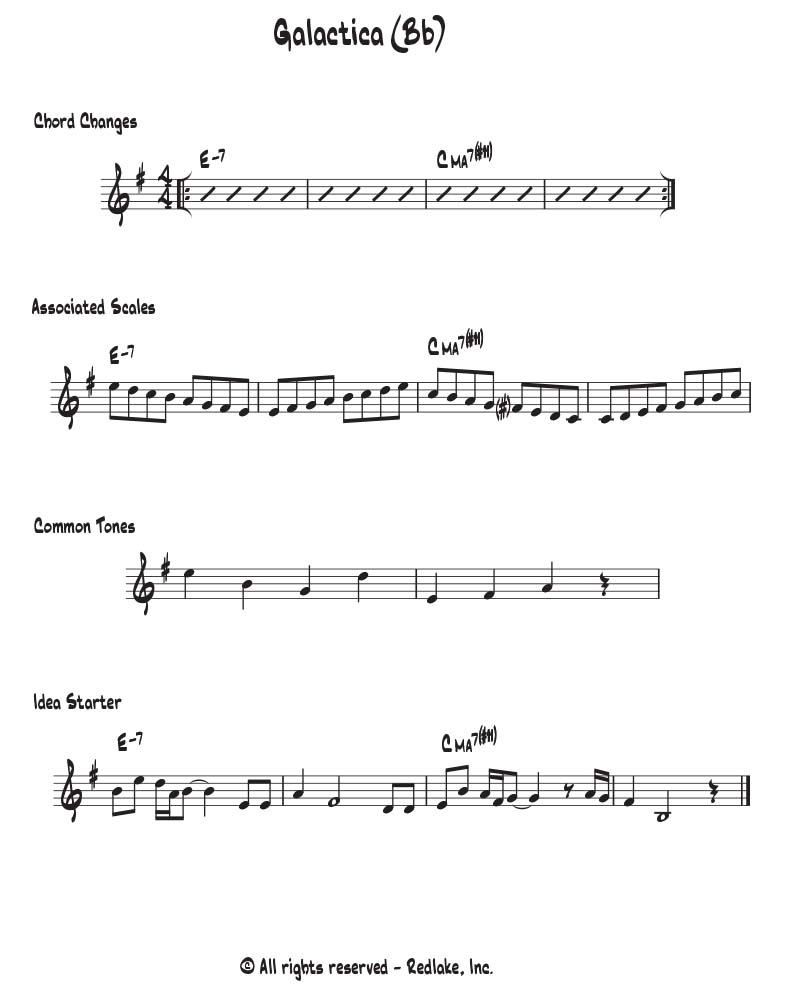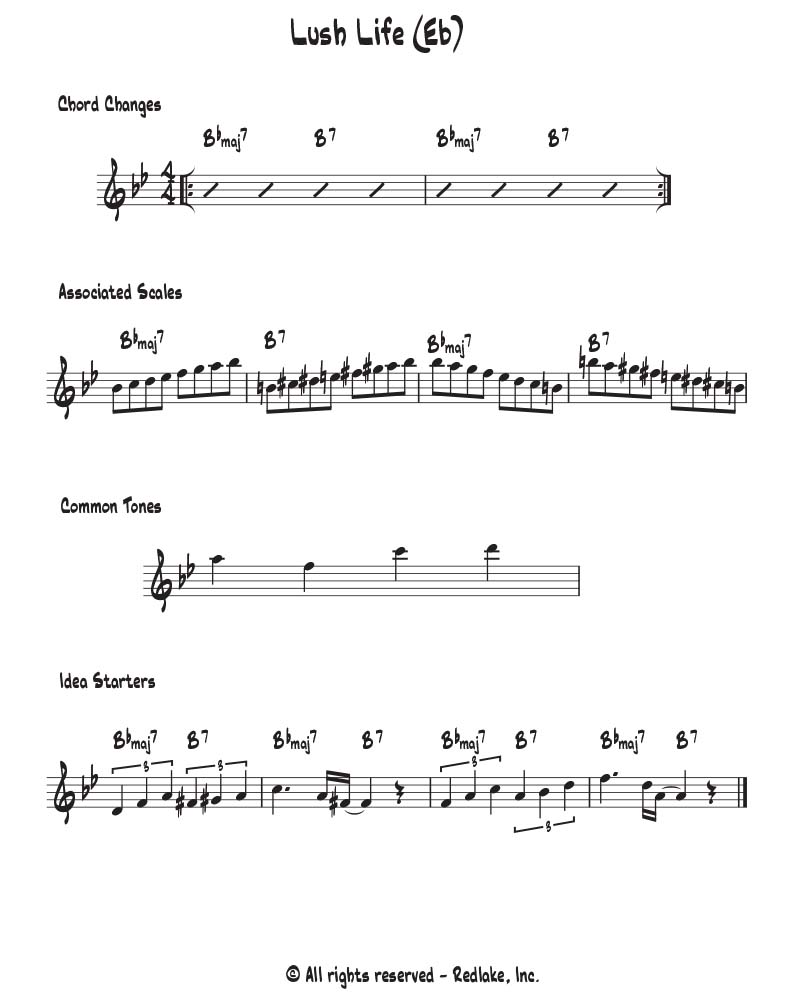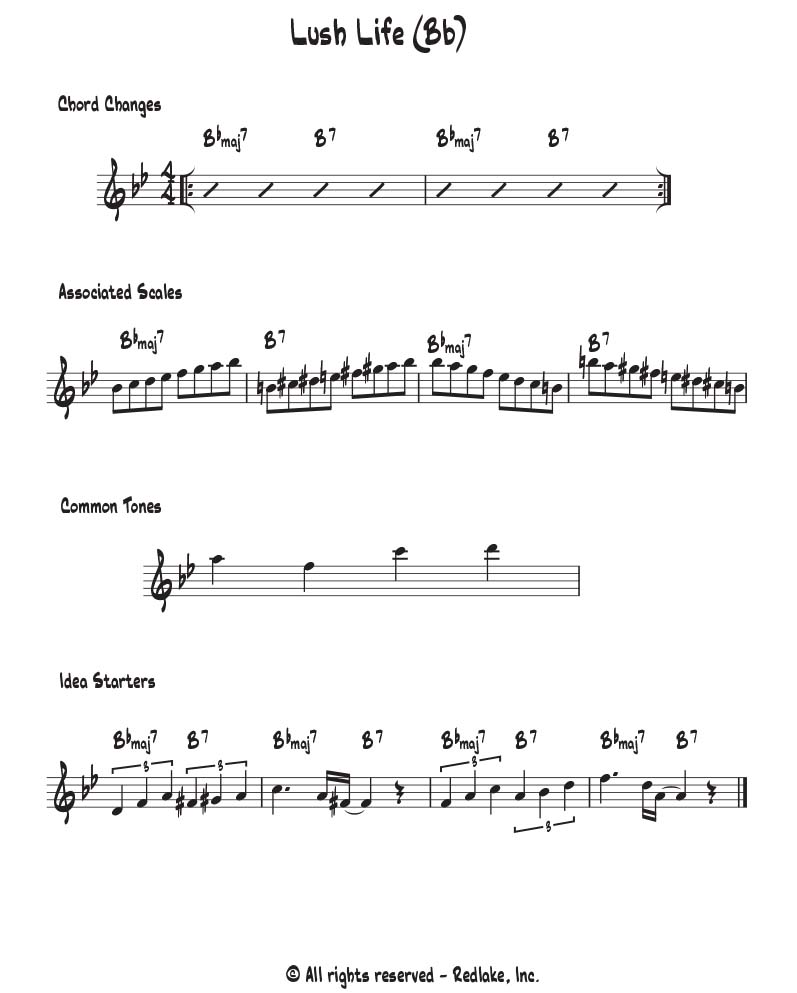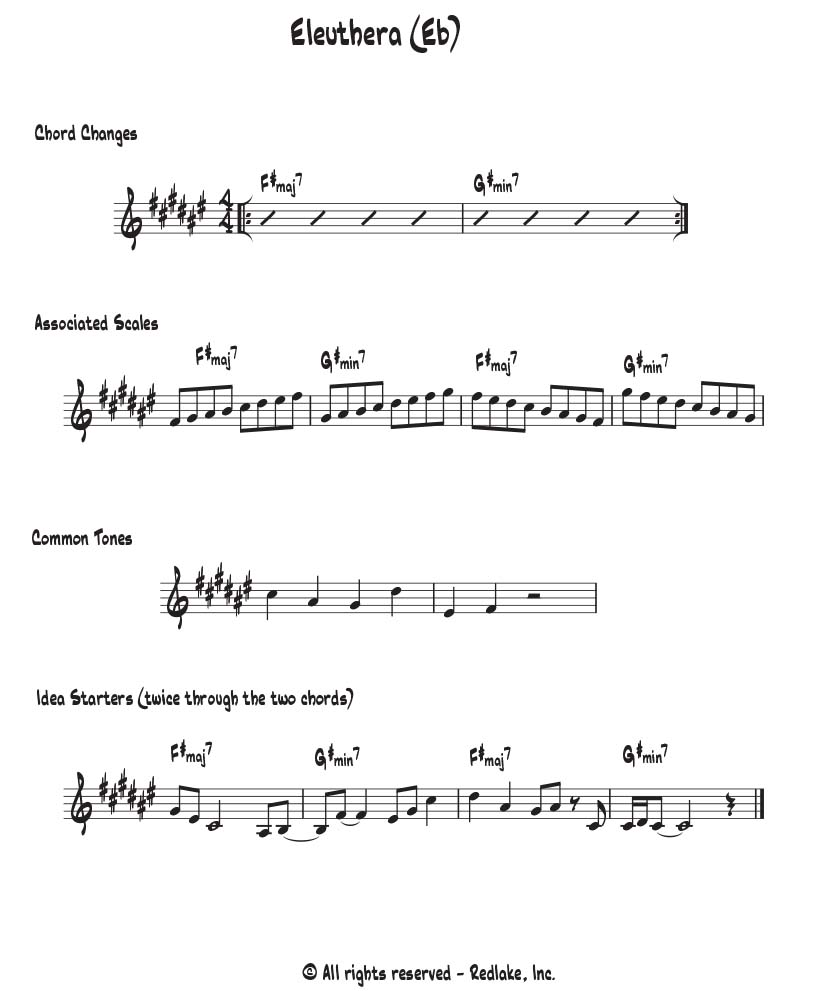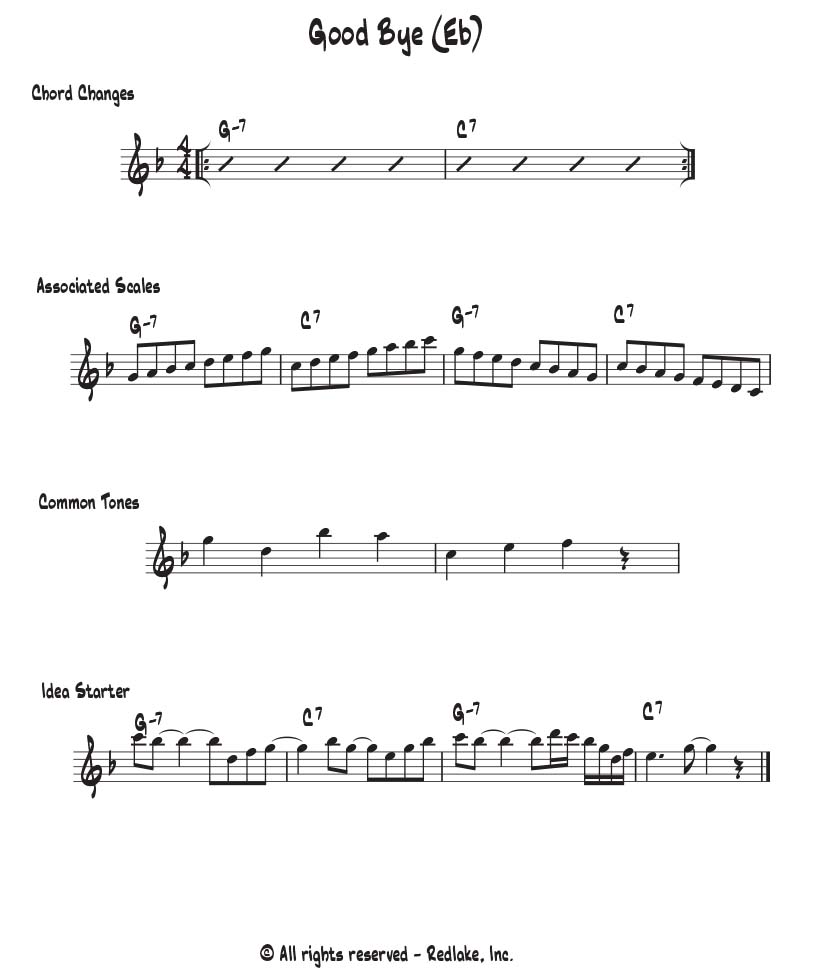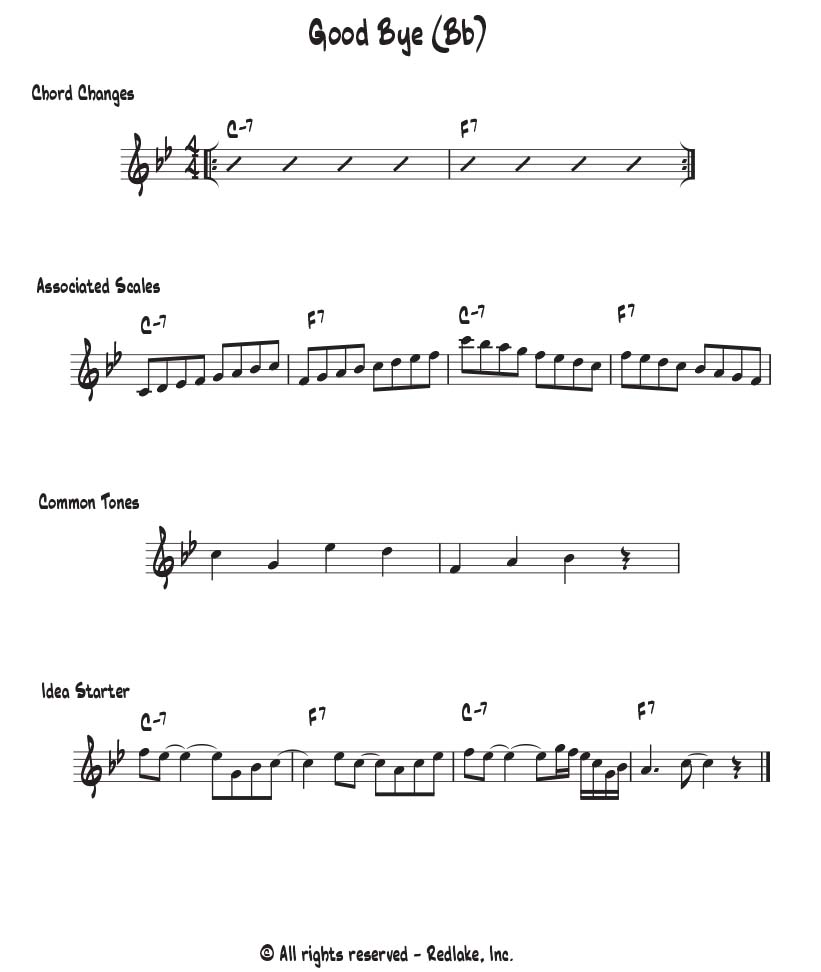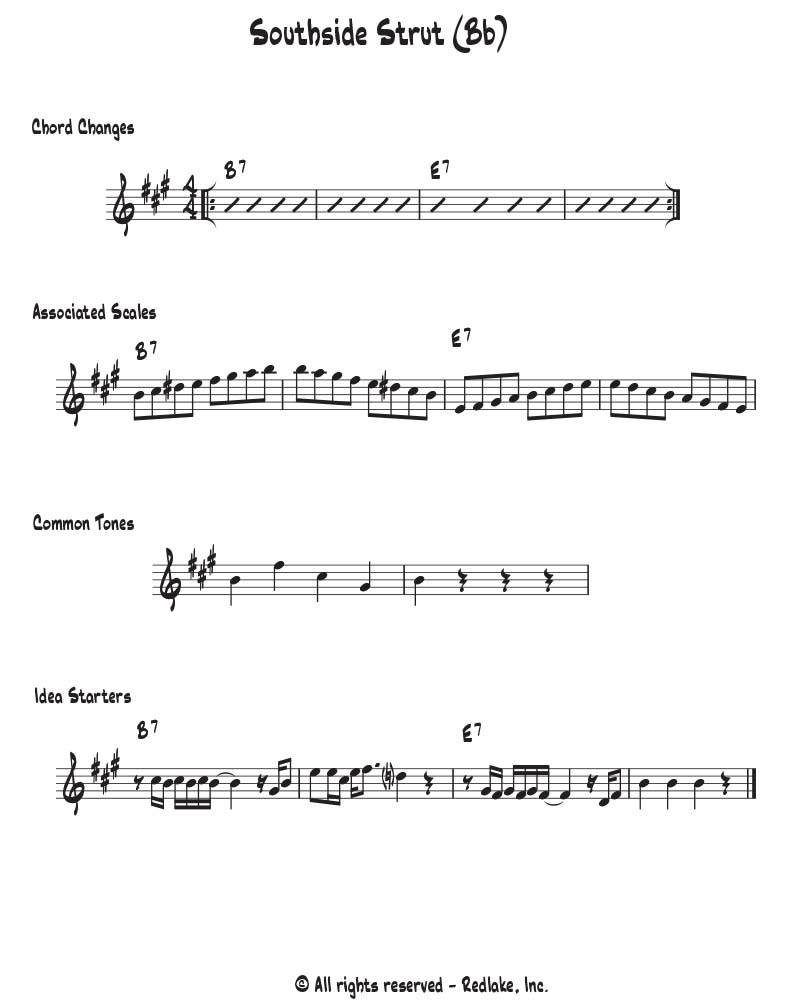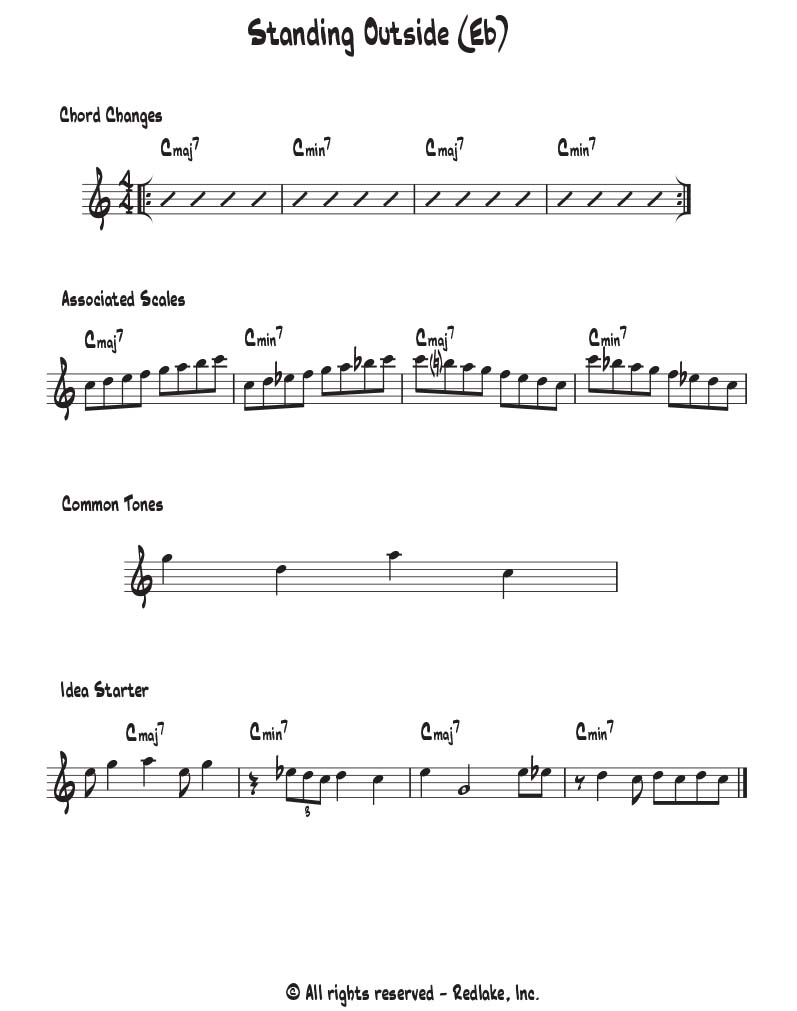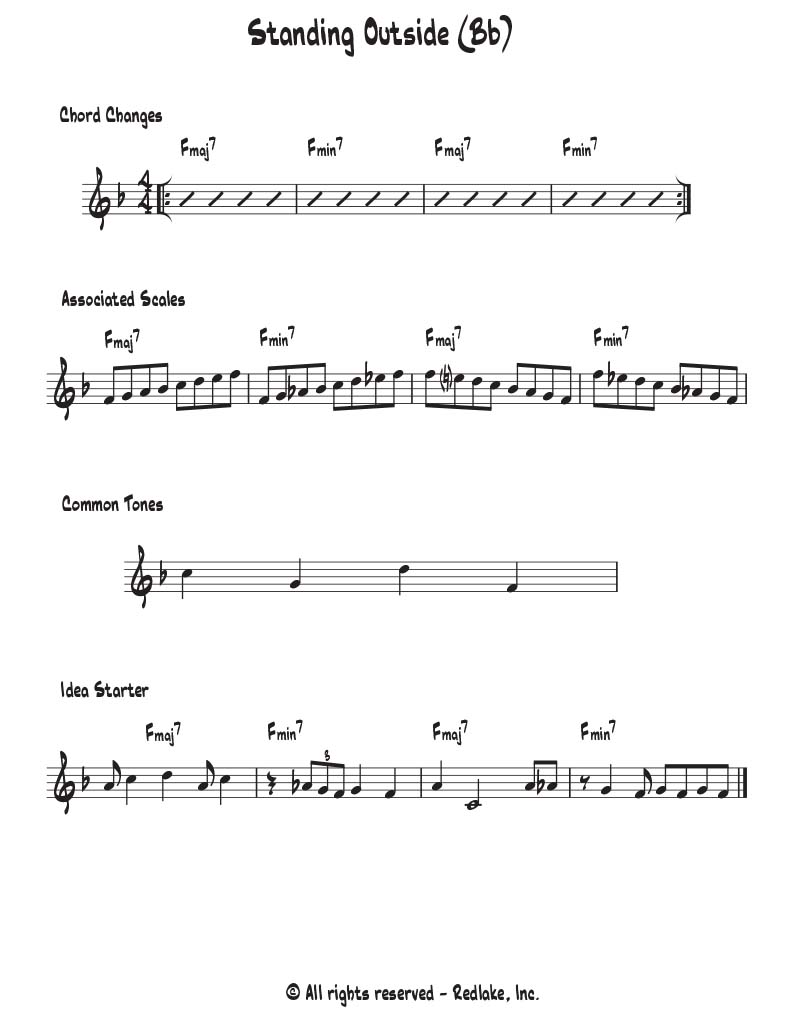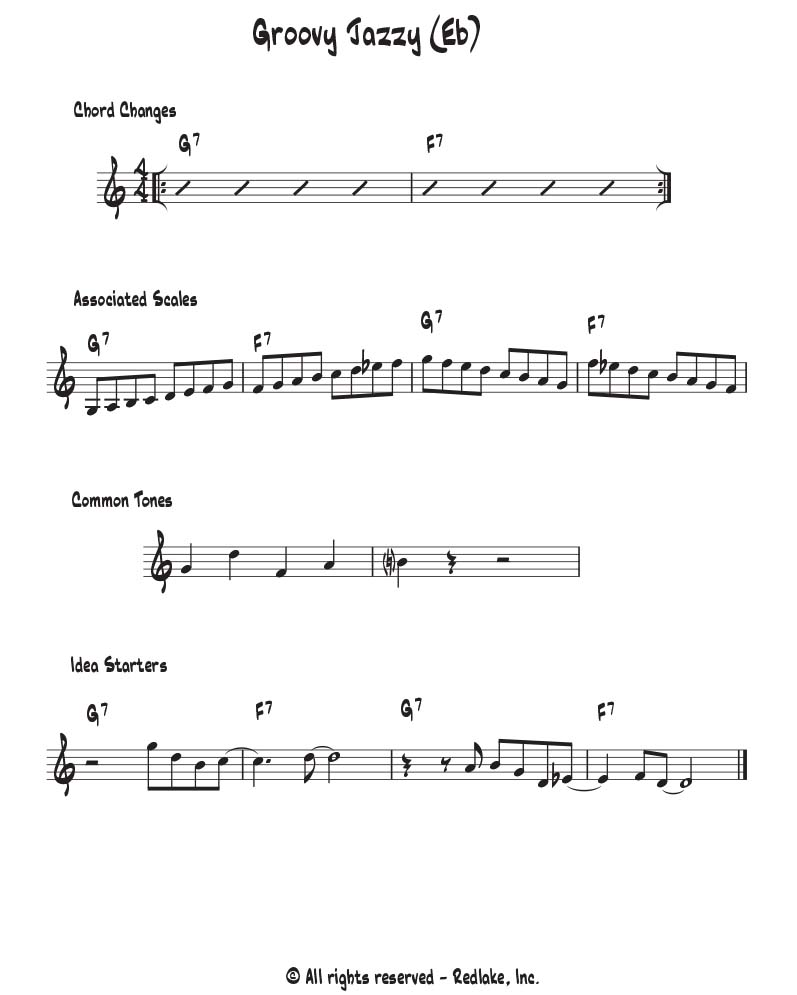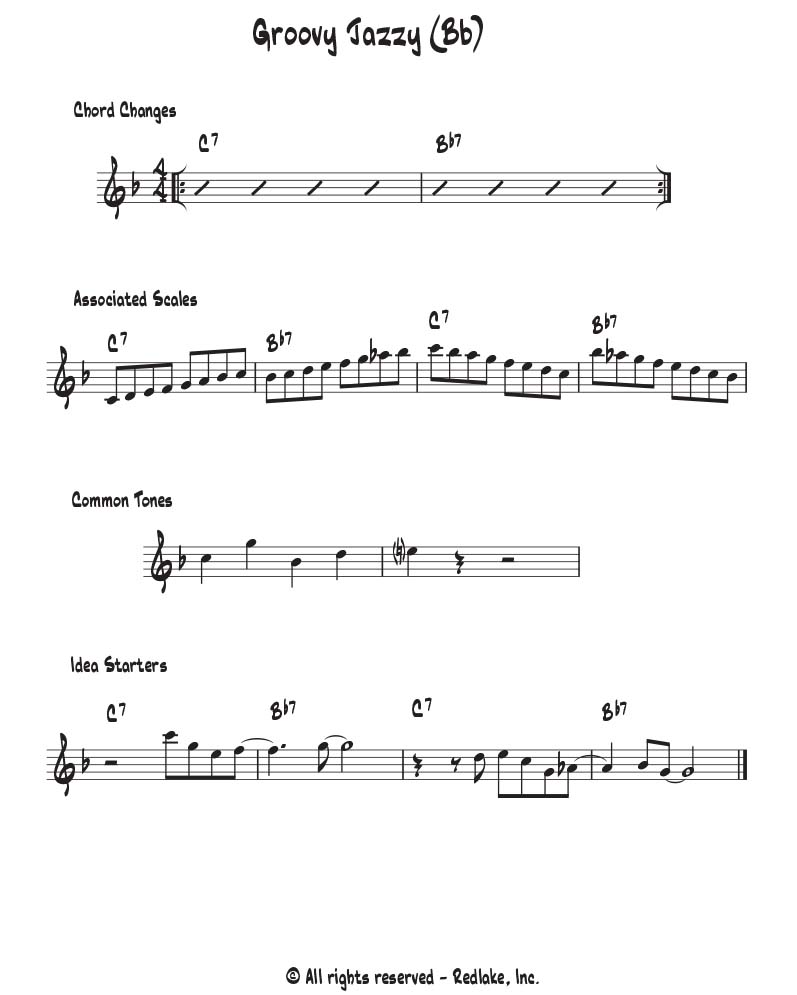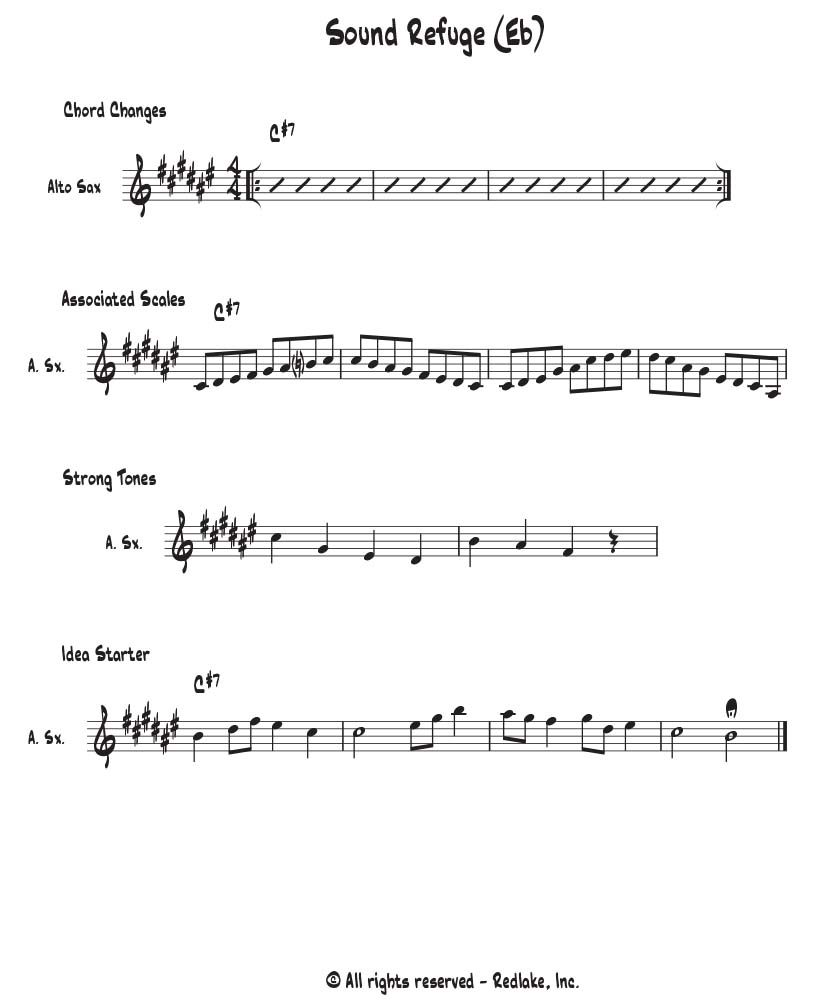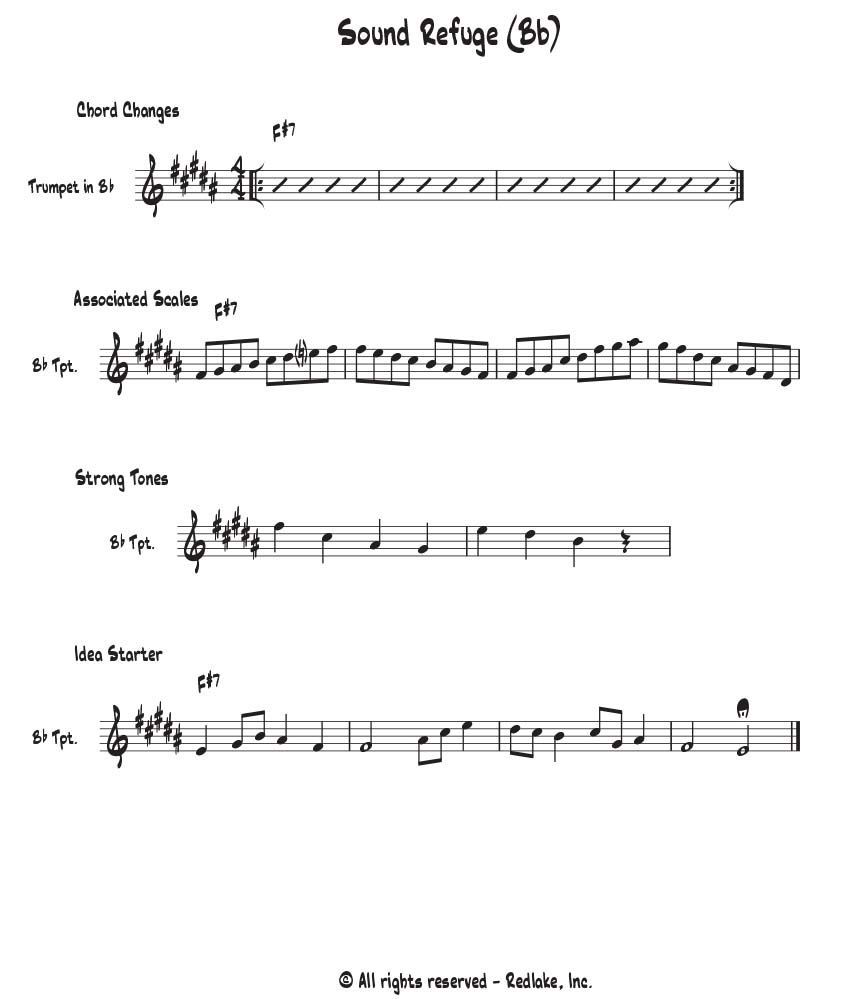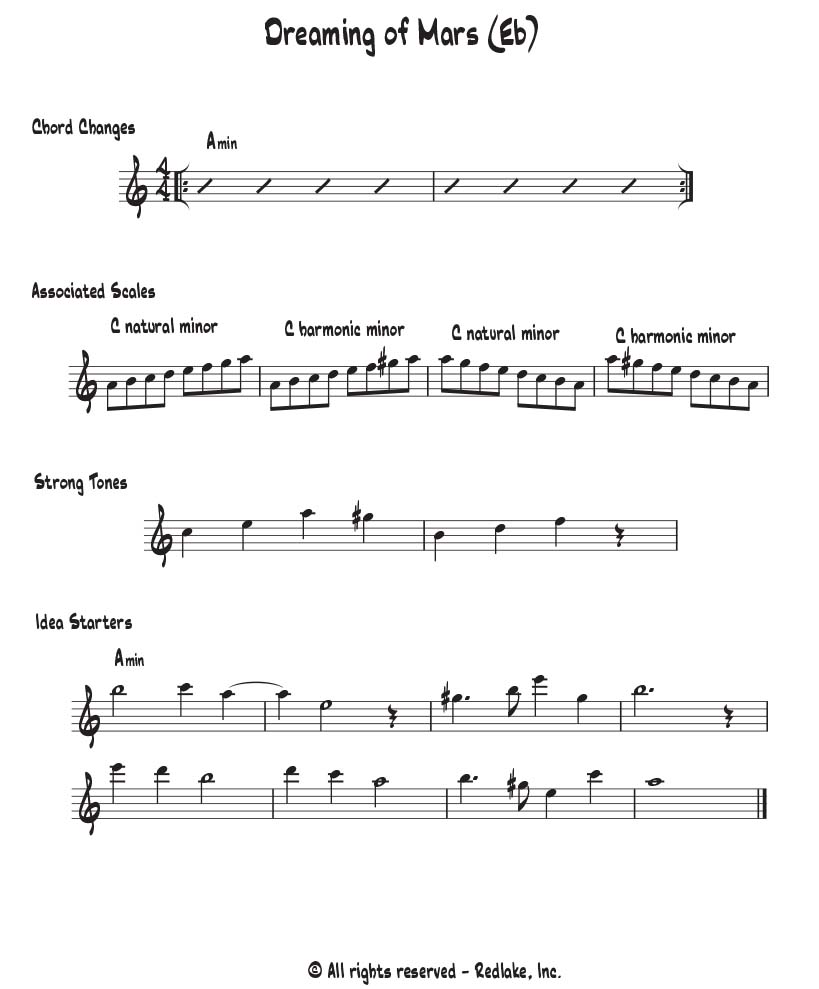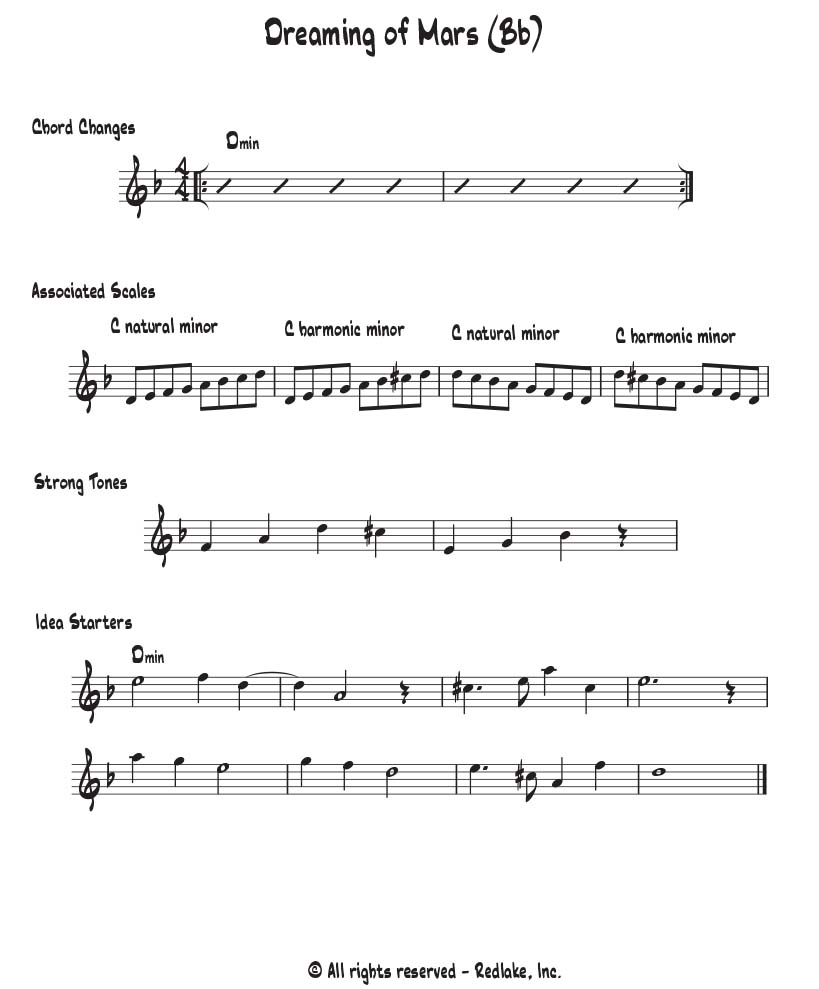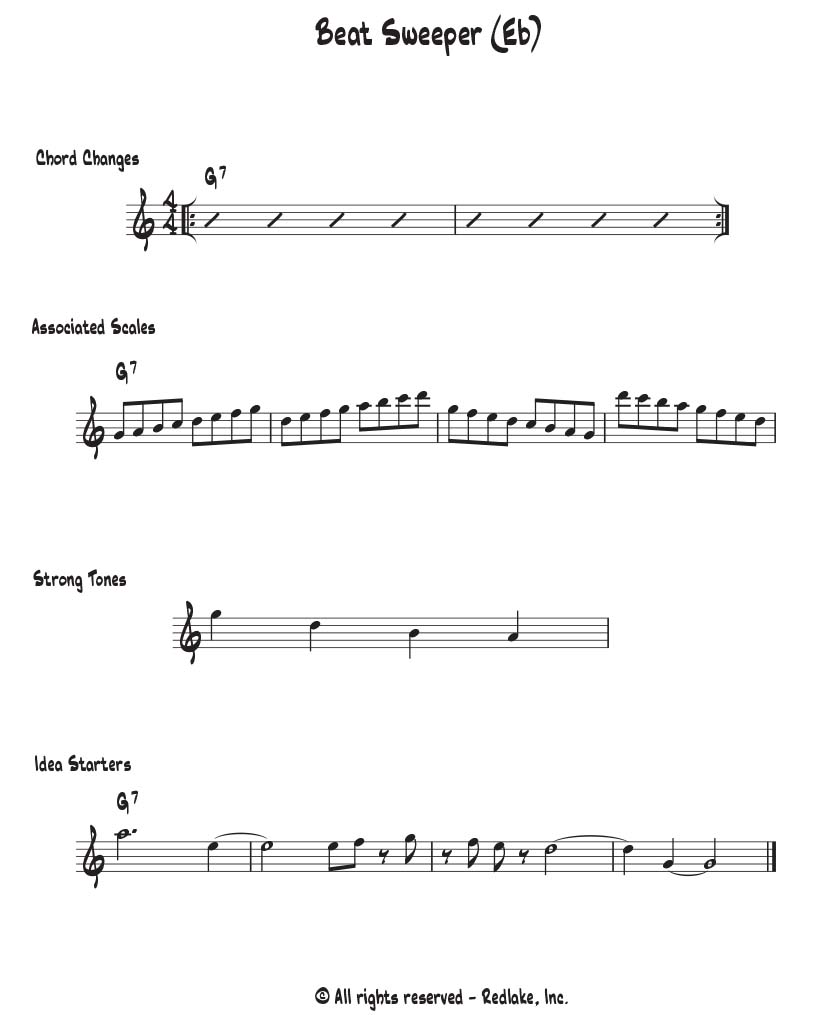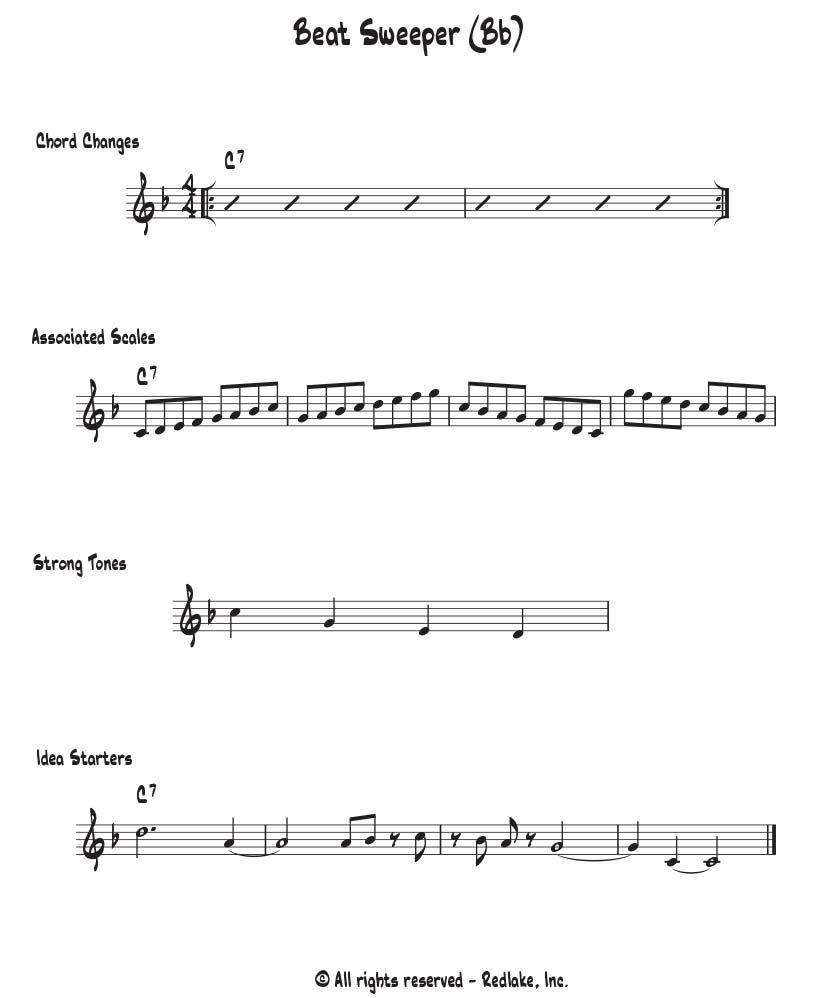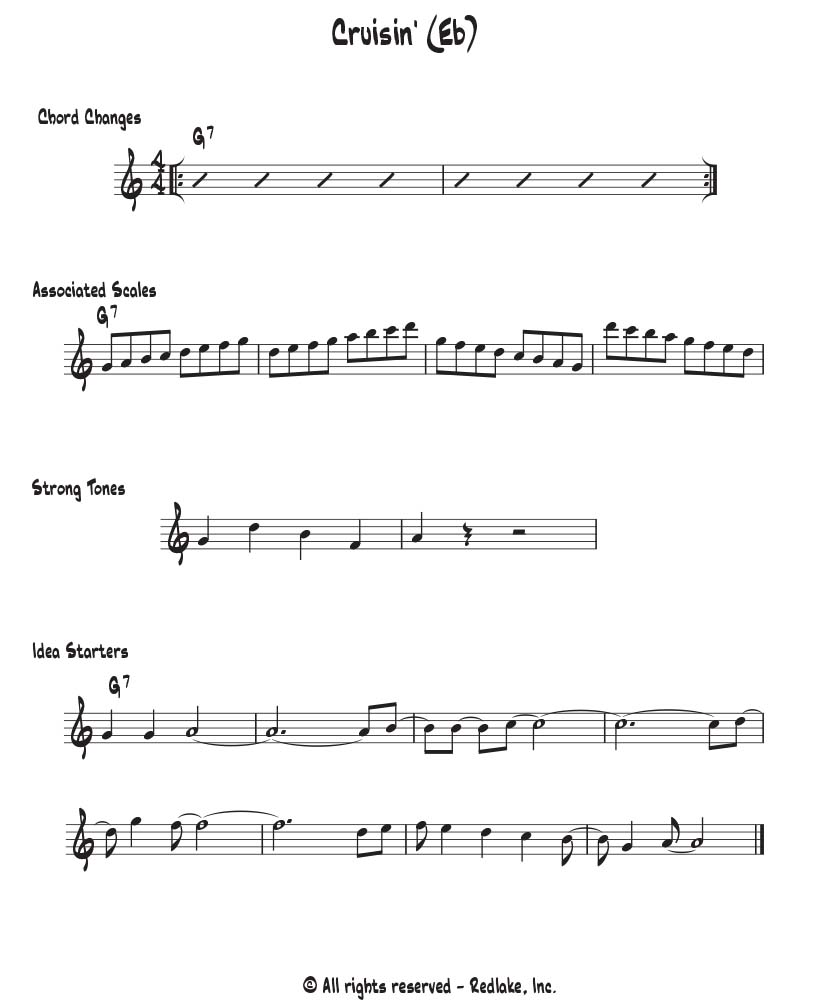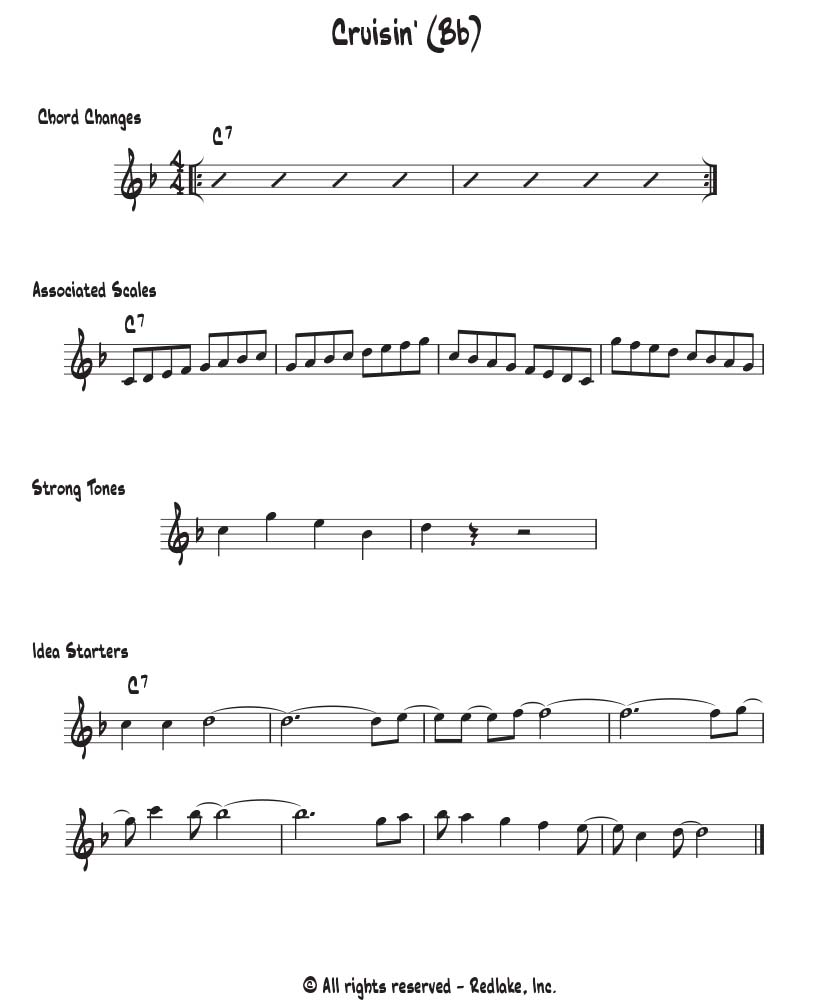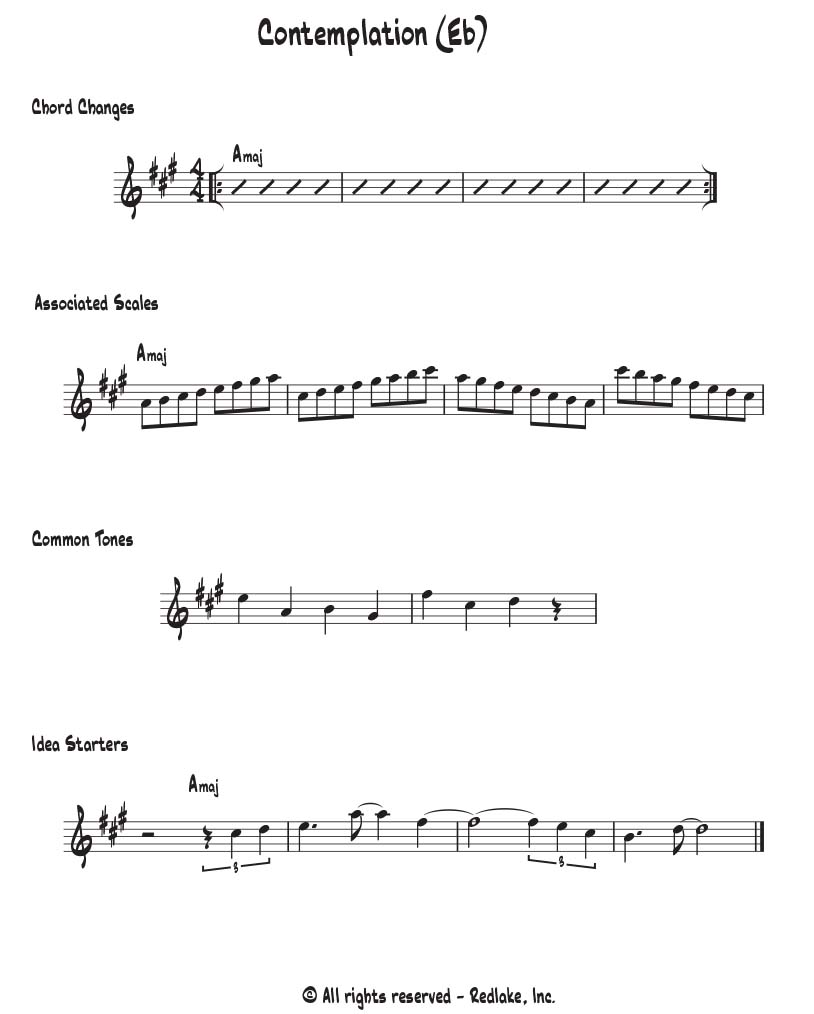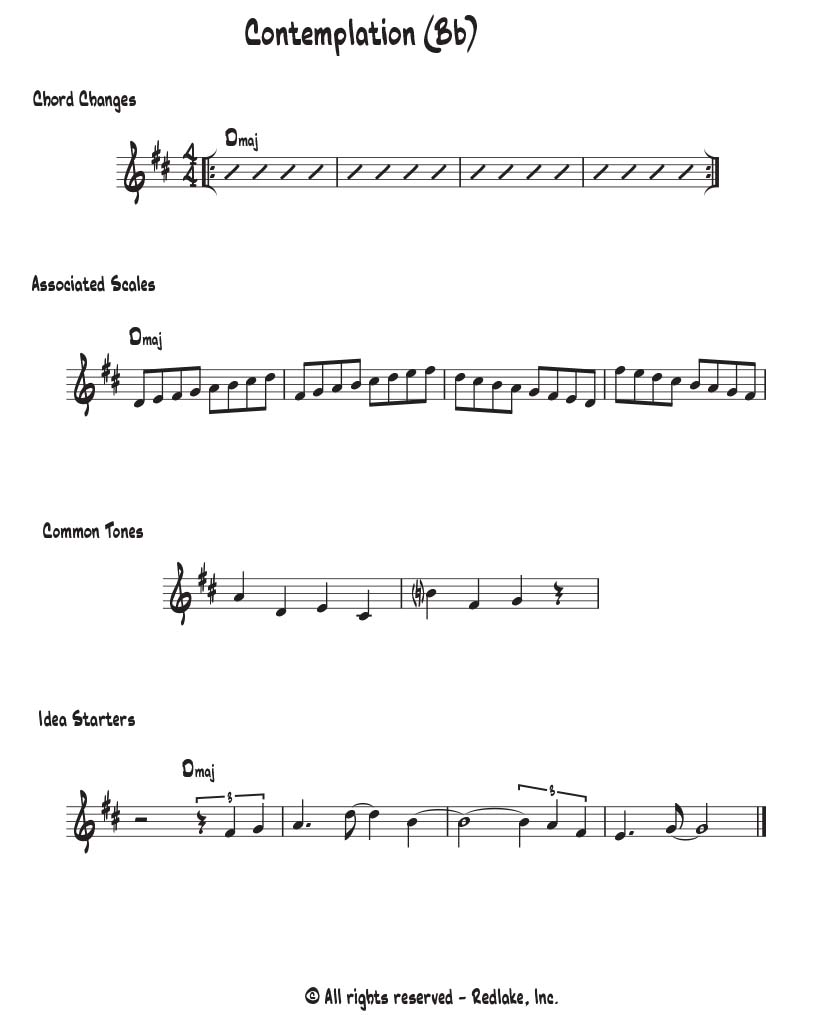Playing Over One Key
In this lesson, we start with a major scale in order to understand the chords built from each of that scale’s individual chord tones. This is where we get the roman numerals for ii-V-I or IV-V-I. From here, you’ll understand why the ii chord is minor or the V chord is what we call dominant. Each chord built off one of the chord tones plays a specific role in the harmony within a particular key.
As an example of a simple tune in one key, Happy Birthday will illustrate the roles of basic chords, with the goal being to hear the motion and pull of each chord from the previous chord and to the next. If you didn’t get the chance to play this tune from section one, here you go.
The attached eBook (if you didn’t already download it from the previous lesson) contains exercises and audio files for this lesson as well as for the next three.
Video transcription
In this video, we’re gonna take a basic look at jazz harmony and I mentioned the major scale in the introduction of this section. So let’s take a closer look at that. A major scale is a good place to start. So as you can see, each note starting from the root of the scale can be assigned a number. And we basically use Roman numerals one through seven. Now, if we stack two or more notes to each of those scale tones, we get the basic chords of that tonality. Now, in this case, it’s the key of C major.
00:39 – 00:56
Now you can do this with minor scales, you can do it with other scales. But for the moment, let’s keep it to major scales. That’s kind of a good starting place. And by adding three notes to each chord tone, we’re creating seventh chords. Now we’re starting to get into a jazz sound.
01:09 – 01:13
Just count the number of notes between the root of the chord and the top note and you get seven. Each of those seventh chords plays a different role and has a different flavor. Standard practice is to associate that number with each of the chords. And you’ve probably heard people talk about a II-V-I or a IV-V-I
01:44 – 02:18
These are some of the most basic progressions, but there are many, many variations on how you can arrange these chords. I mean, that order is what creates the harmony and everything from the Beatles to count Basie. And it’s good practice to go through a song and analyze the progressions and we’re gonna do more of this as the course goes on. Depending on the song, this can get pretty complicated. Now, I want to use the tune, Happy Birthday that we looked at in the last section and let’s take another look at that and analyze the chord progressions.
02:18 – 03:02
Now, if you went through the exercise in the last section, you’ve already played it, hopefully in all 12 keys. If you haven’t done that exercise, go back at the end of this and play it. I think that’ll be fun for you and I think it will be enlightening a little bit too to play it through the 12 keys. But let’s just for now, let’s just look at it in the key of C. So the first chord is C major and that’s the one chord, the second chord is G major or the five chord. Now, if you play that as a three note triad, you would call that chord, a G major chord, but I’m going to play it as a four note chord. And therefore, it’s going to be what we call a G7 chord because of the F.
03:04 – 03:11
We’re still in the key of C all white notes, five chords have a tendency to pull the ear back to the one chord. You hear that. So look at the chord in bar six, it’s the four chord or the F major. G seven is again the five chord that resolves back into the one chord at the end of the tune and bar eight. Now, regarding those last three bars, you’ve heard lots of songs that go IV-V-I, lots of pop tunes use that progression or cadence as it’s sometimes called. Now, Happy Birthday could hardly be called a jazz tune. Hm. Or could it maybe if that one chord is a C major seven and the four chord is an F major seven because that’s what I did when I created the rhythm track for the ear training exercise.
03:57 – 04:42
In the last section. I used the seventh chords for all of the basic chords of the tune. And that’s what made it sound modern and not like something you’d hear on a kid’s video. Now, adding that seventh chord and another note on top of that seventh is called a ninth and that creates even more of a jazz feel to the chords, right? So now the question is, how would we improvise over this chord progression on Happy Birthday. Well, since each of the chords are built from within that single key of C major, we could play within C major over the whole tune.
04:42 – 05:06
Now, I spoke in the introduction about the downside of using scales as the basis for improvisation. So rather than run the C major scale over these chords, we should think in terms of a key rather than a scale. Now, one advantage of that is you’re not tempted quite as much to just start on C and work your way up the scale because that’s a sign of a real beginning improviser.
05:07 – 05:30
Now that I’ve told you what not to play, the question is probably, well, what can I play over this simple tune and these simple changes? So I’m going to record a solo of me playing a few choruses of this and then the next video we’re gonna talk about what I played and kind of analyze a little bit of it and talk about how you can apply some of those things in your own improvisation.
05:31 – 06:00
Now, a couple of things to keep in mind. I’m gonna put a transcription of the solo on the screen while it’s playing. I’m gonna put it in Grand Clef for treble and bass clef. And in the companion materials to the video, I’ll have a transcription for all the instruments. But what I want you to do the first time or maybe the first two time is to listen to the solo, don’t look at the transcription. Turn away from the screen and just listen.
06:00 – 06:25
The theme for this whole course is listen versus look. Now, part of the reason is because the rhythm track on this is kind of a cool double time I feel. So it’s not just da da da. Right. It’s got a little bit of a hip feel to it and I know that it’s going to require some 16th notes for Syncopation.
06:25 – 06:55
And it’s gonna look harder on screen than it’s gonna sound. So, first of all, I don’t want you to look just because it’s gonna look more complicated, but more importantly, I just want you to hear it, not just analyze, right, plenty of time to analyze. And uh so listen to the solo, feel free to play along with it, you know, with the transcription and the companion materials, I’ll put it for all four instruments and here we go, listen to the solo and I’ll come back on the next video and we’ll talk about it.
